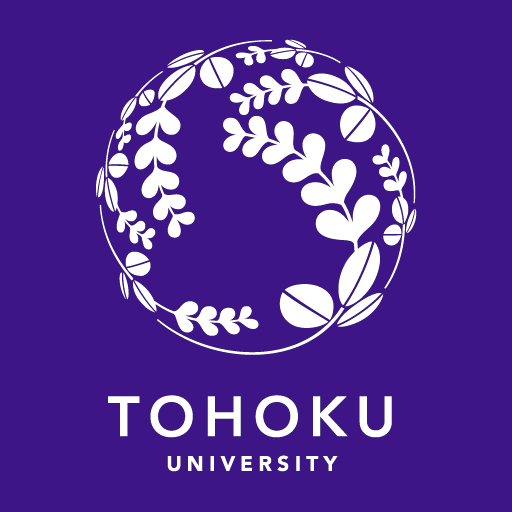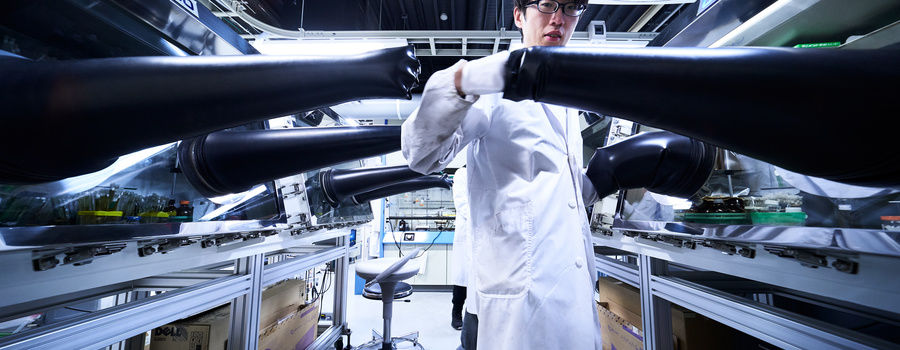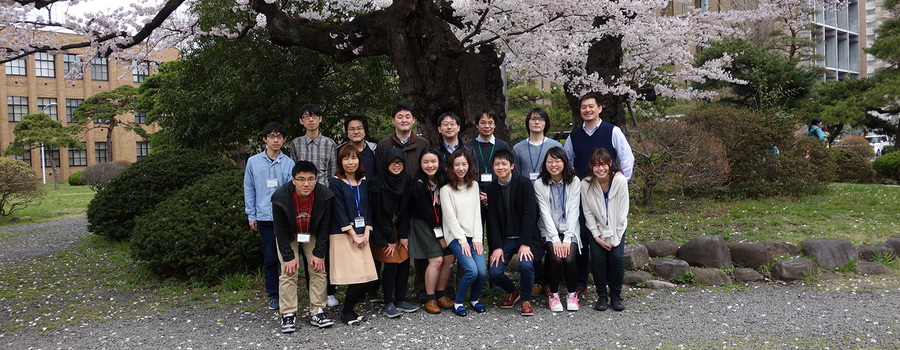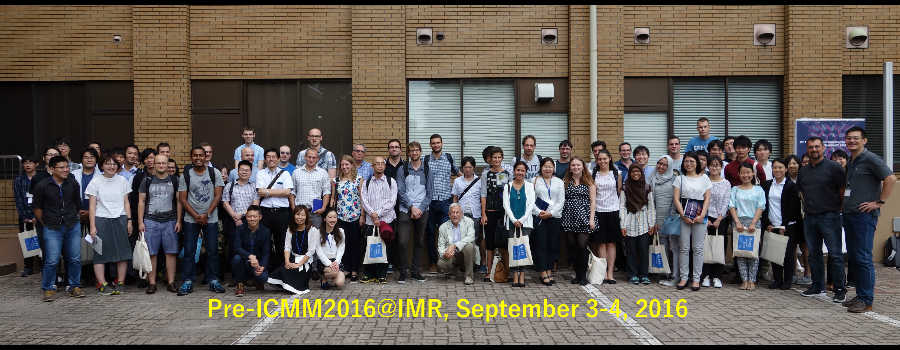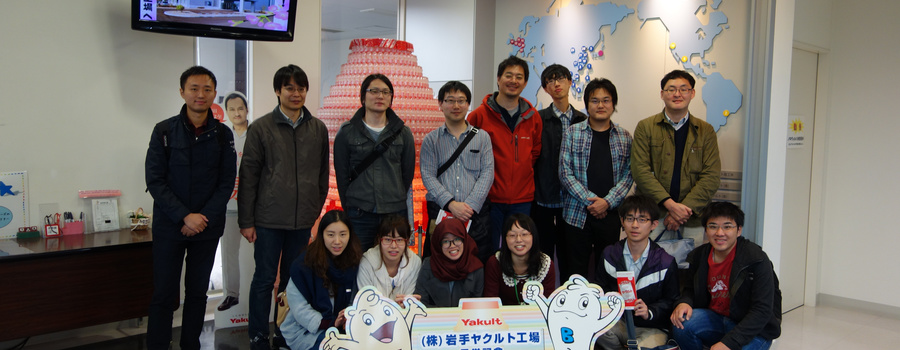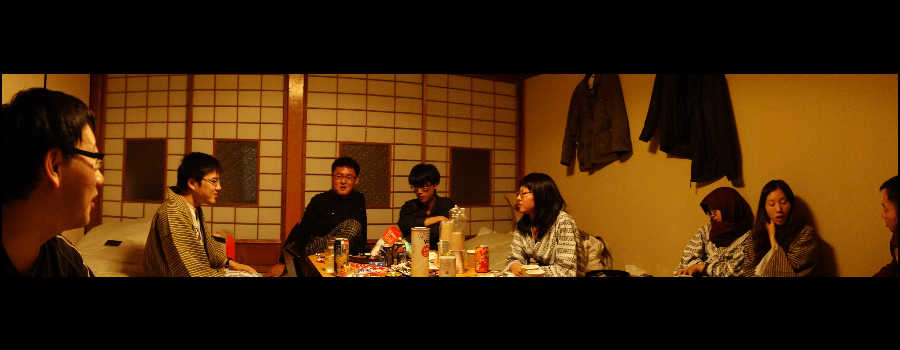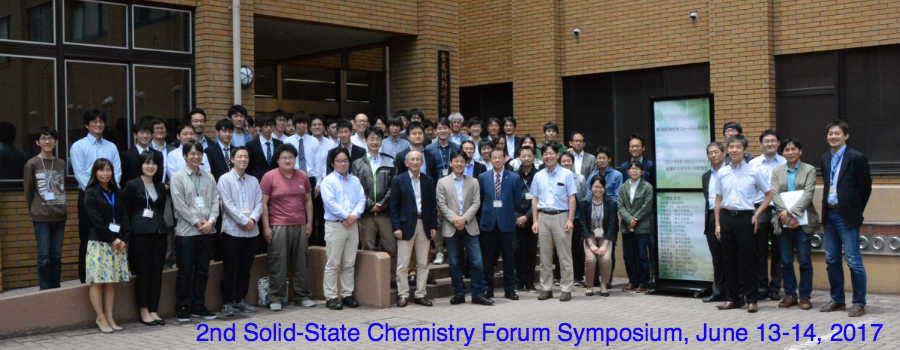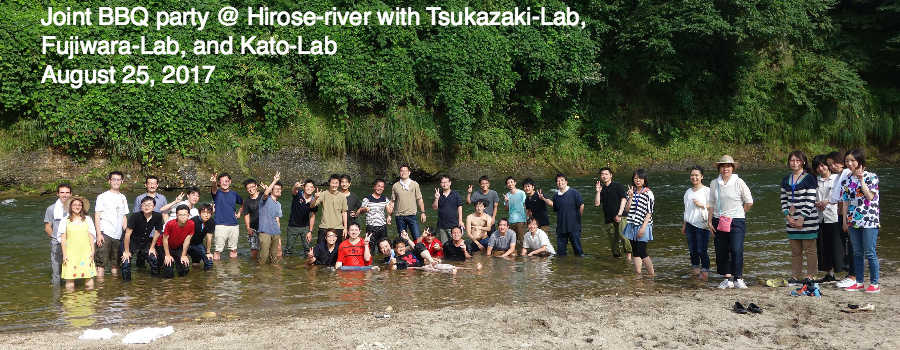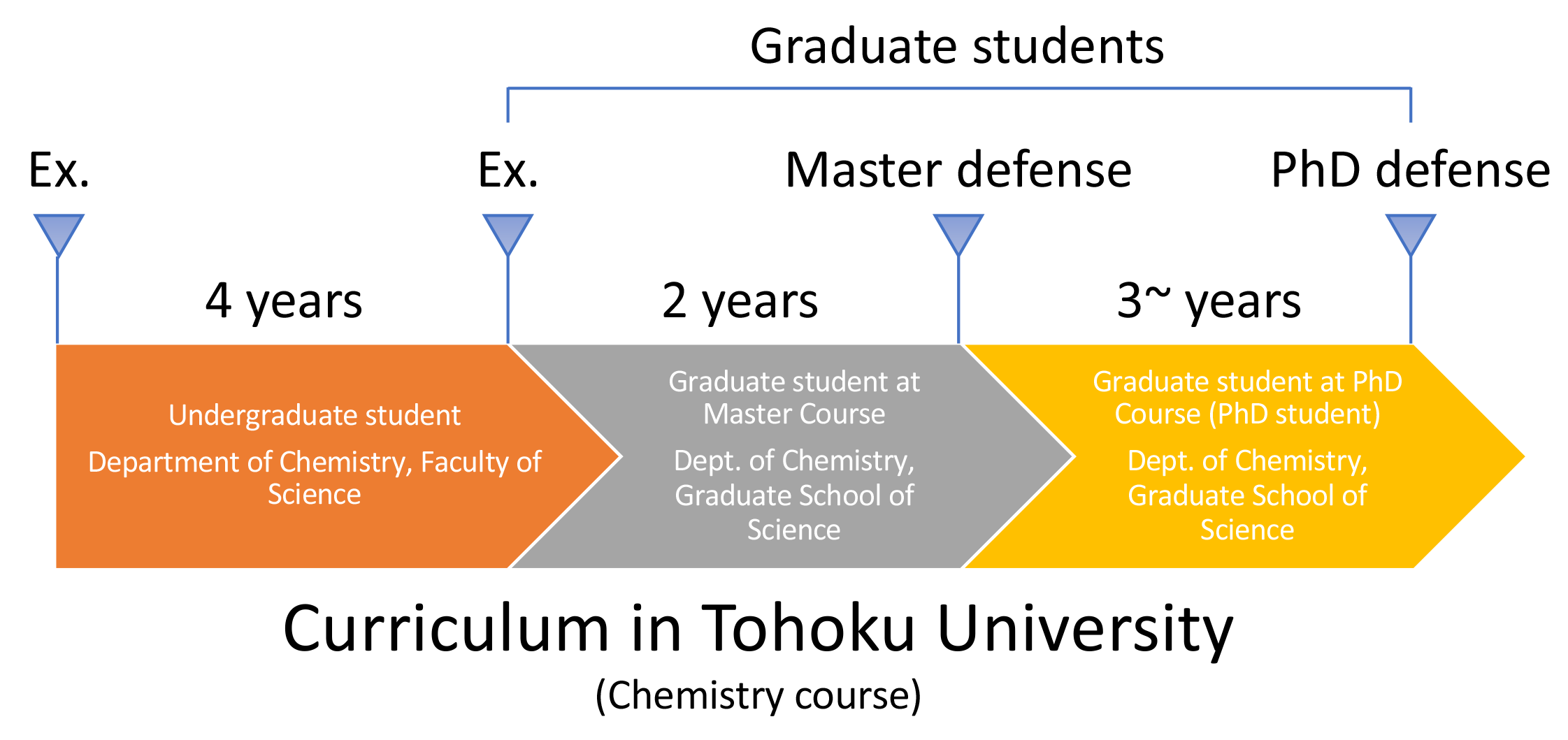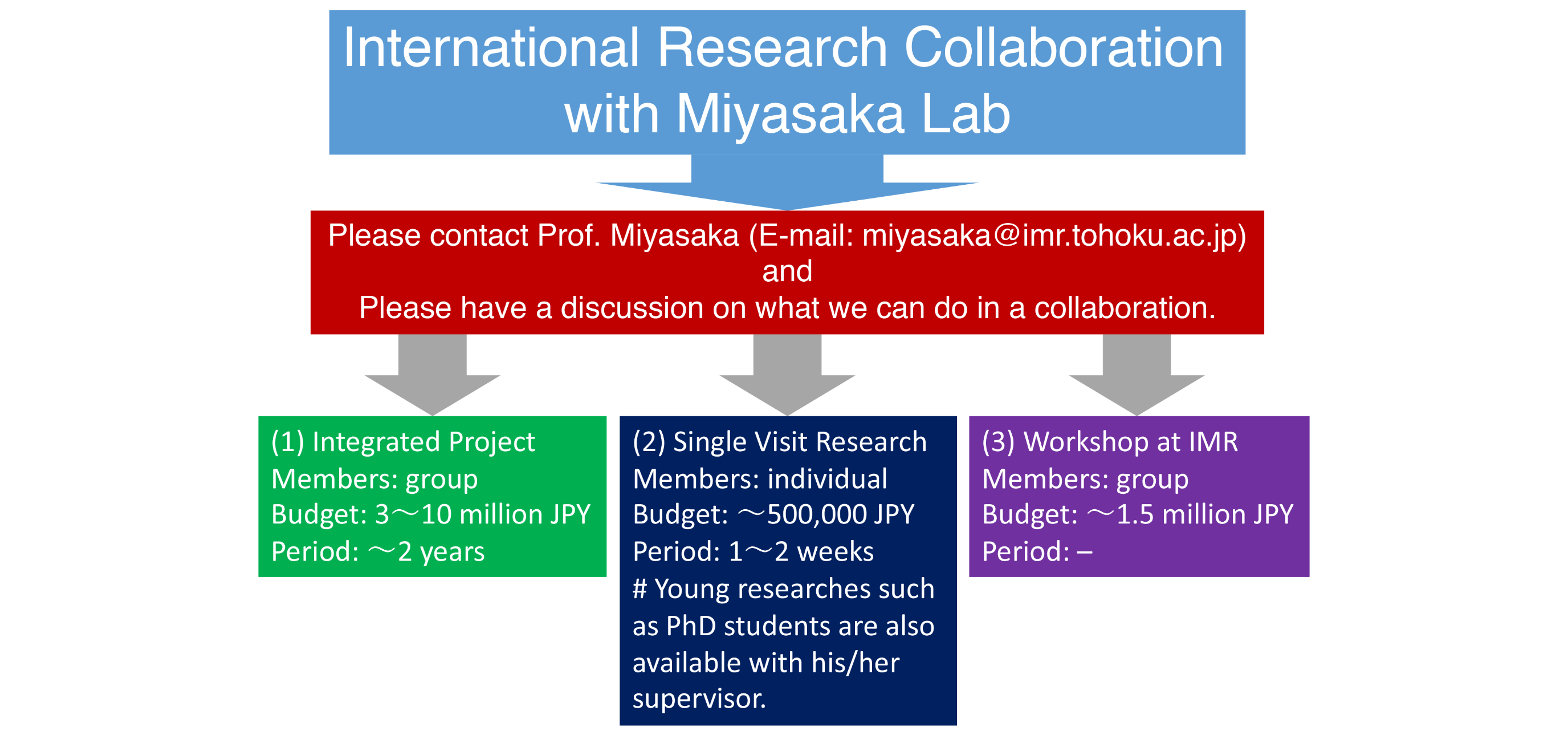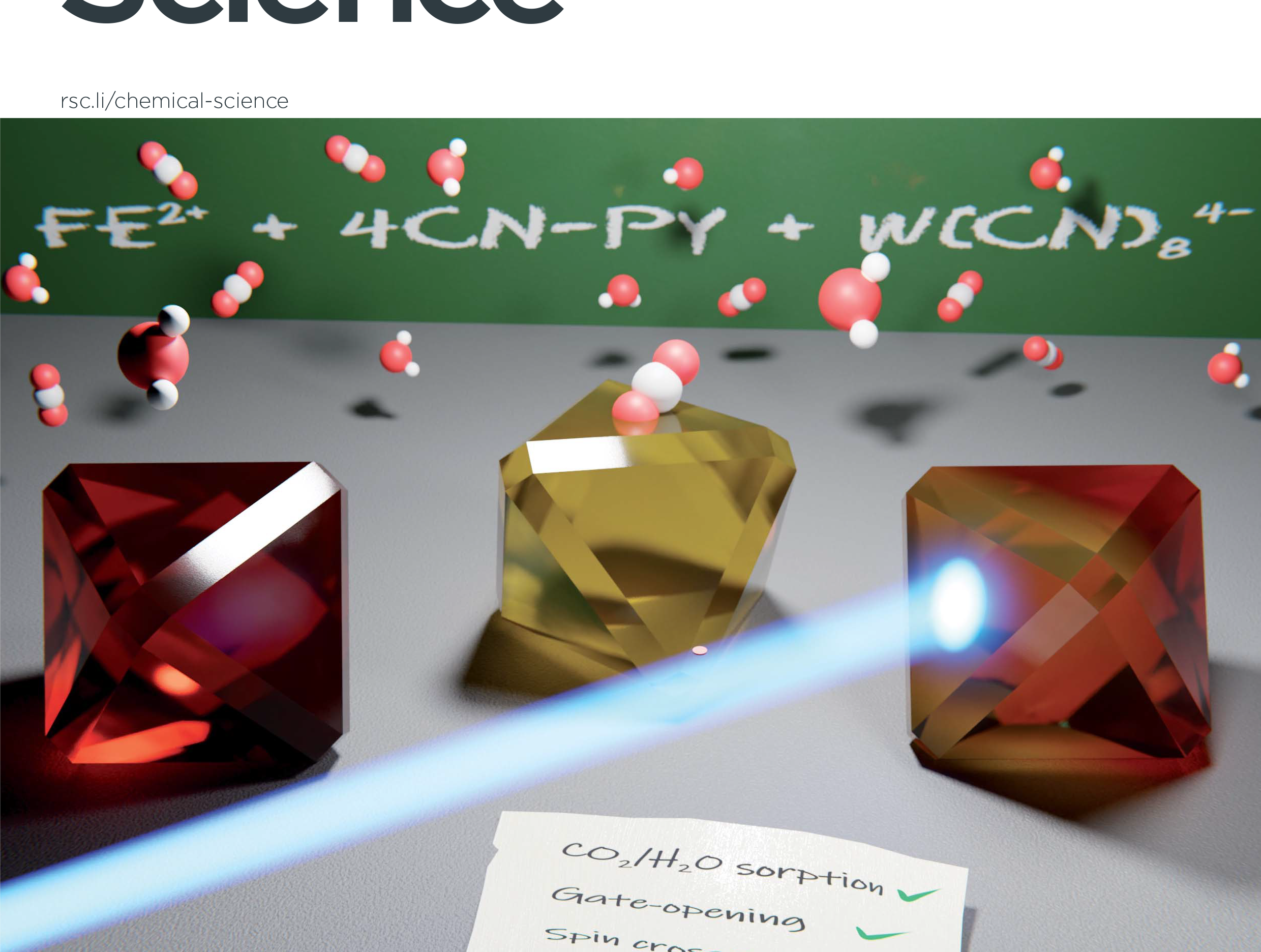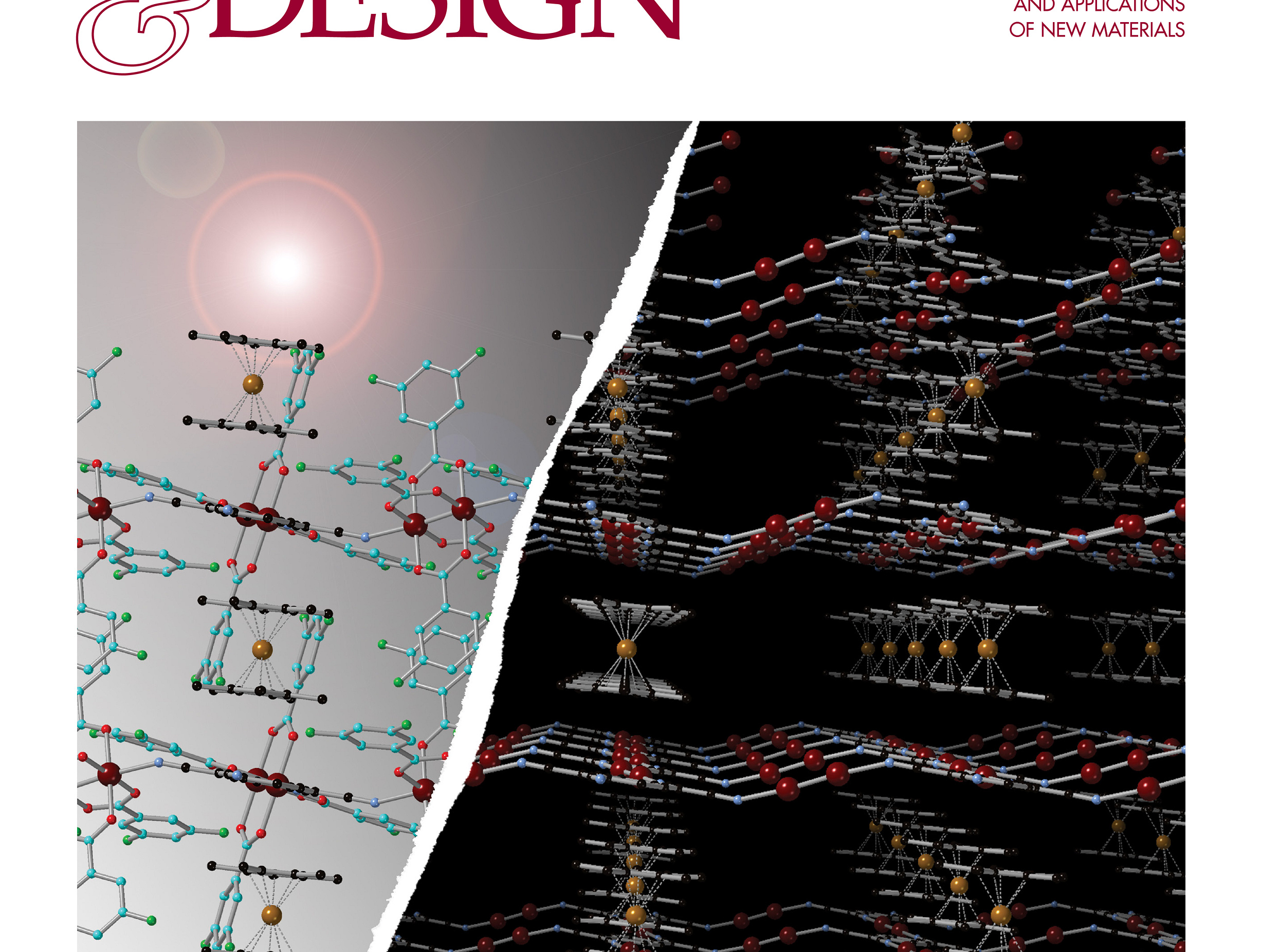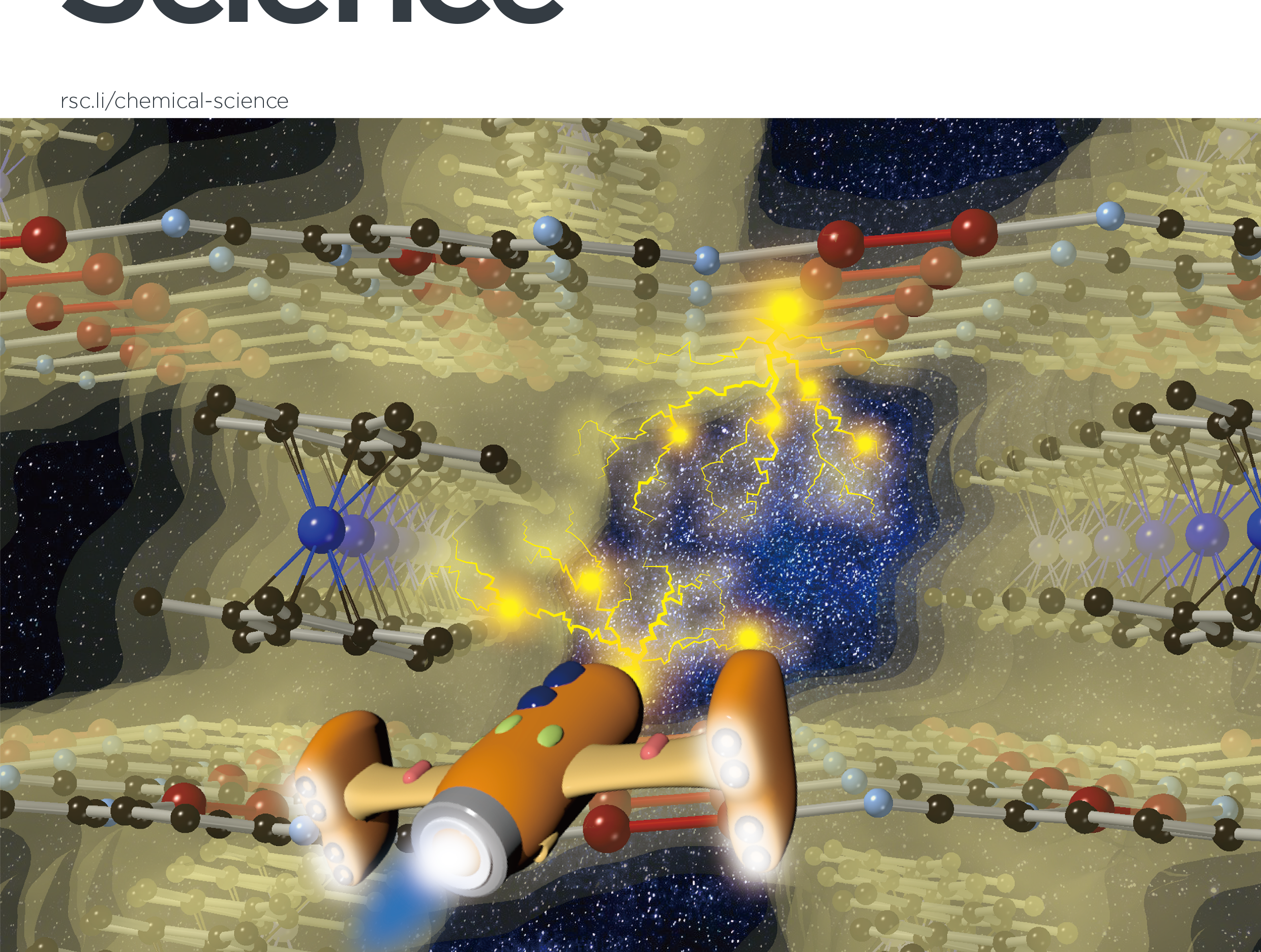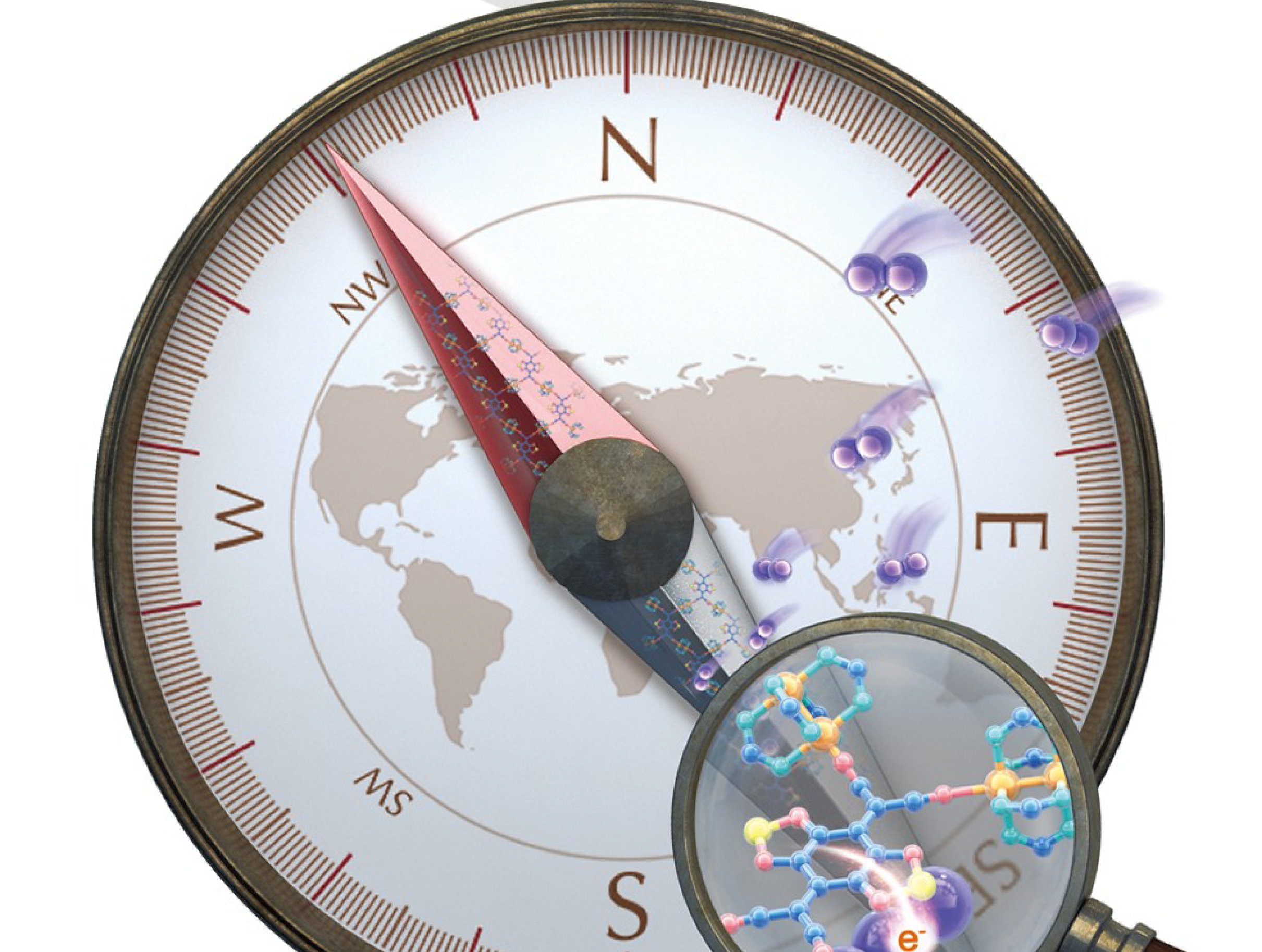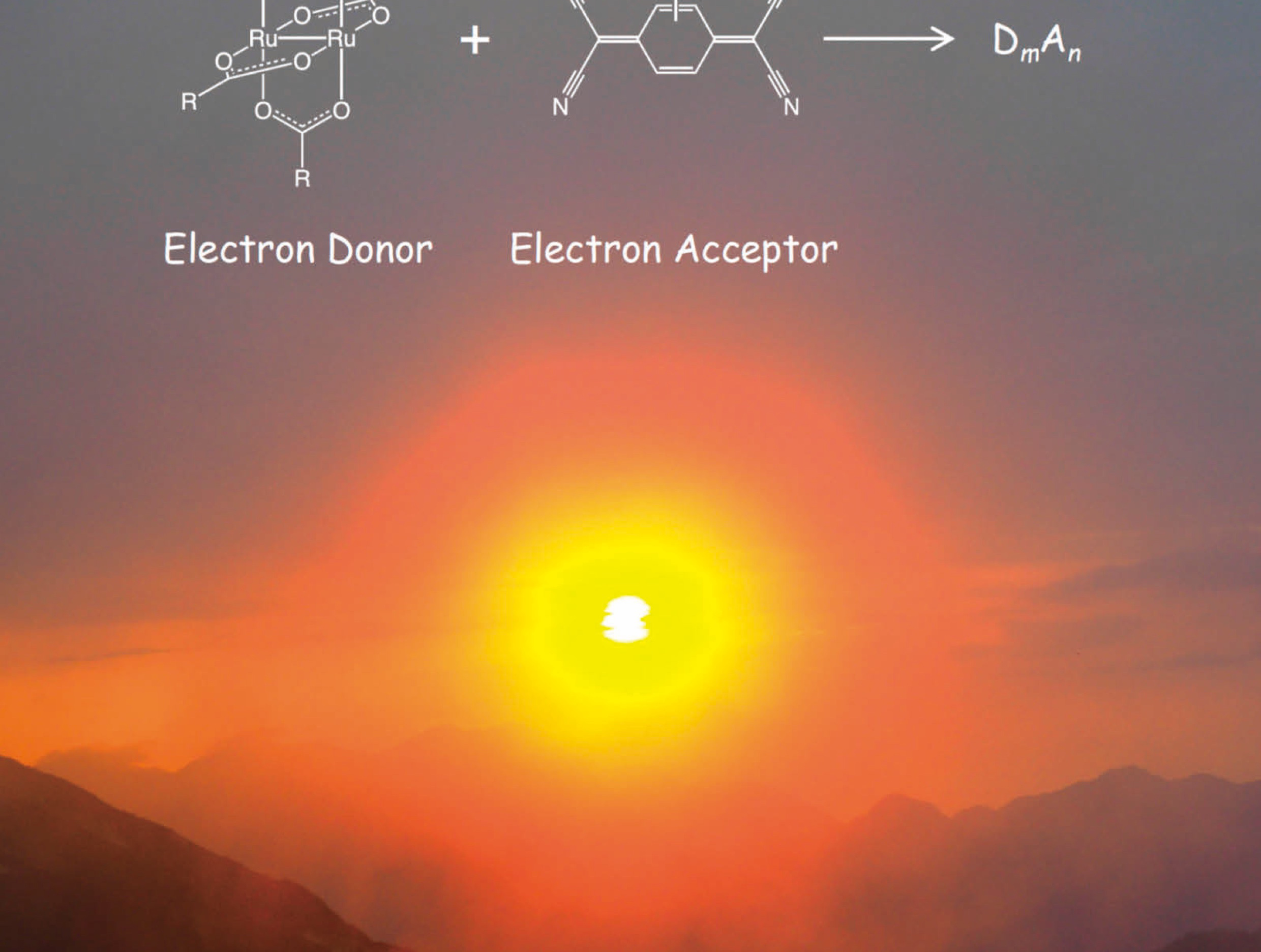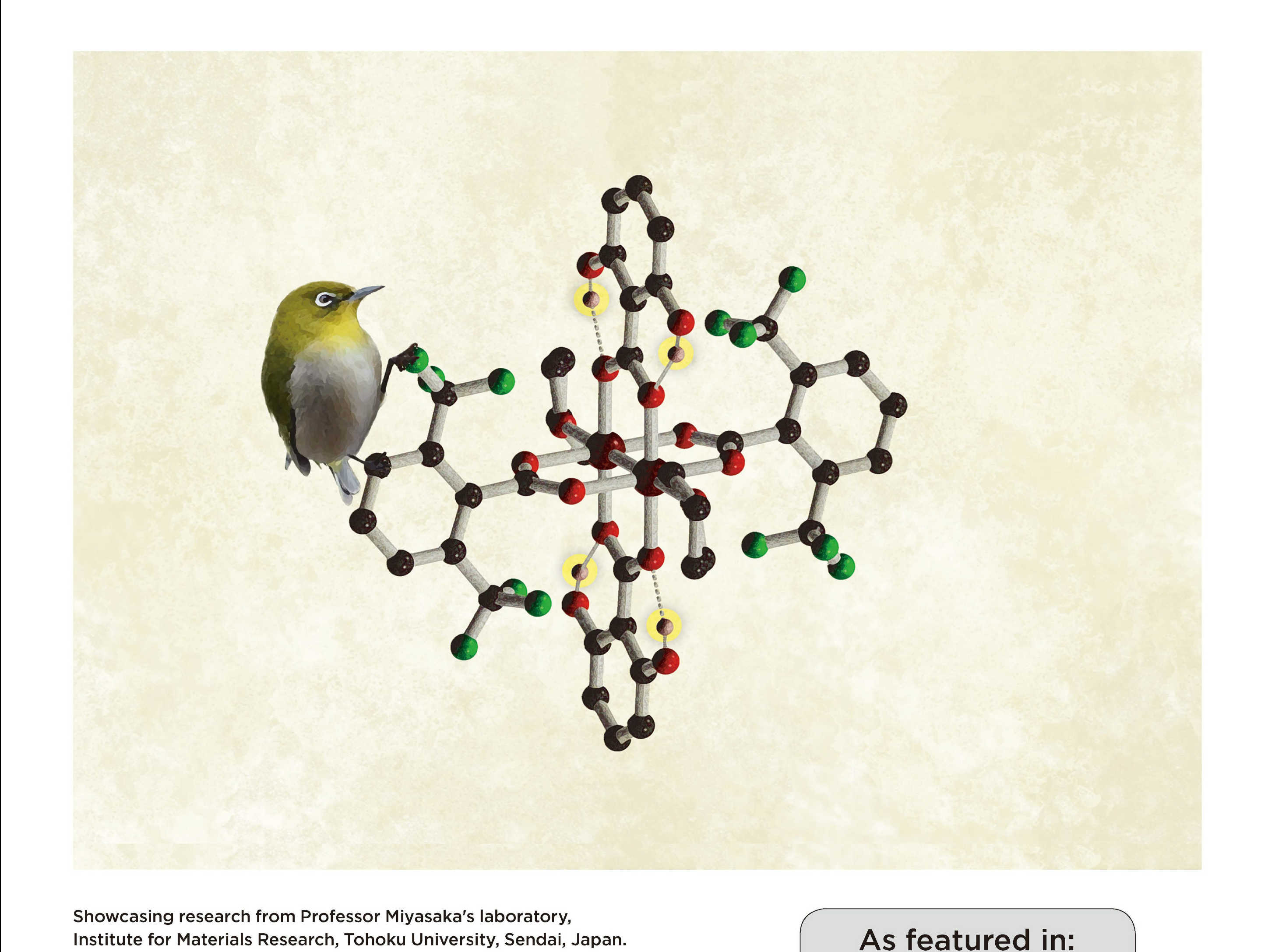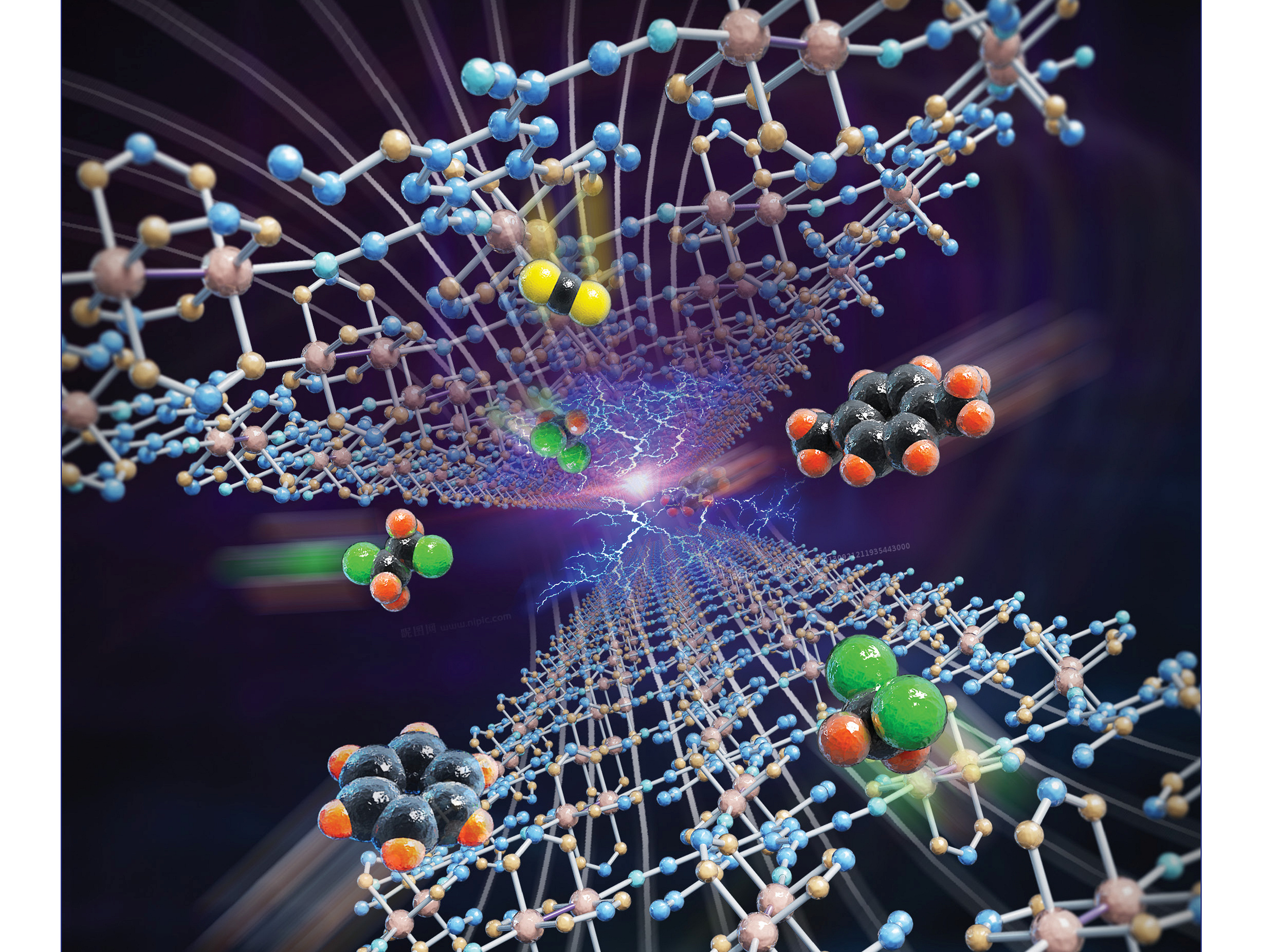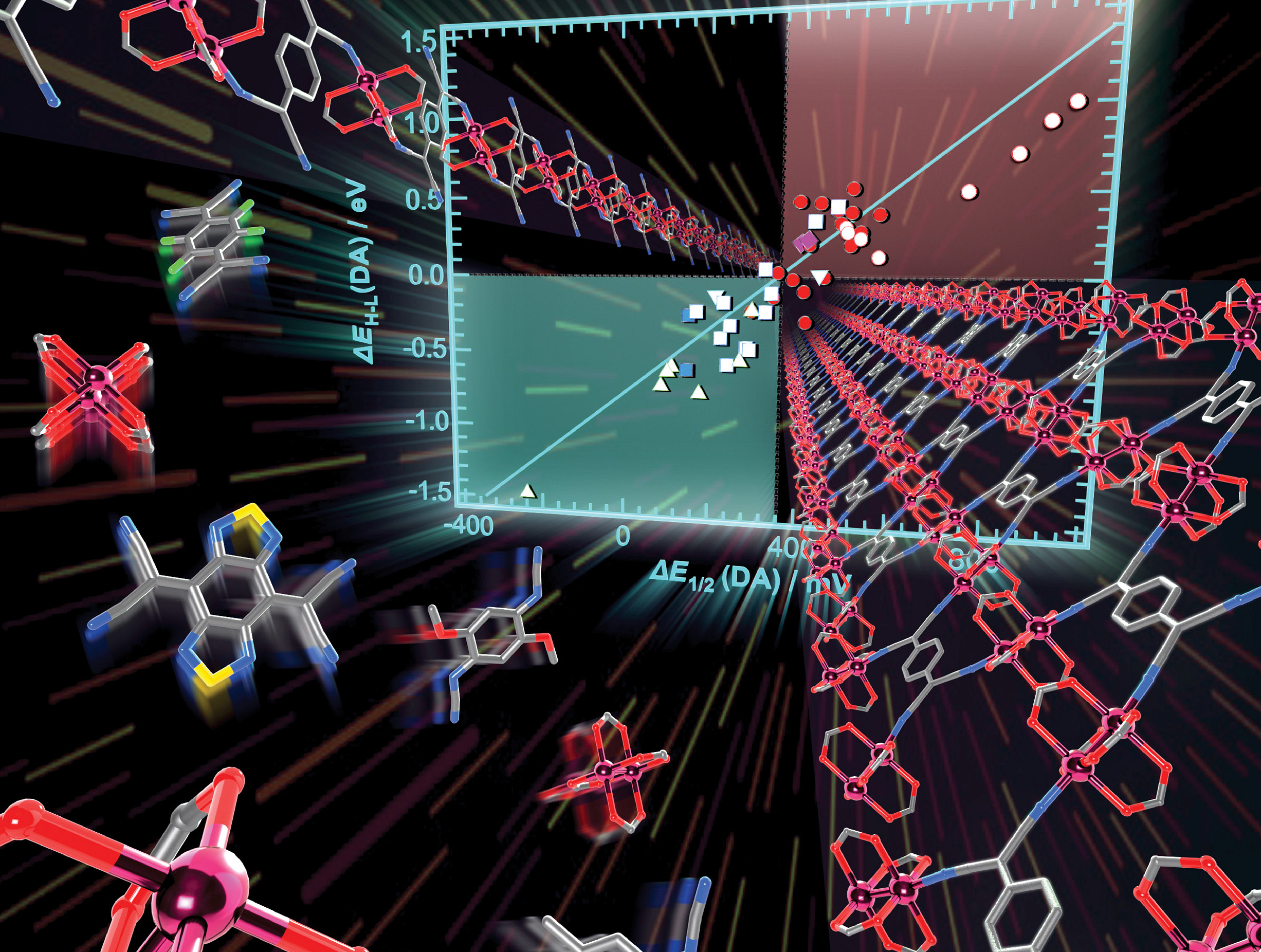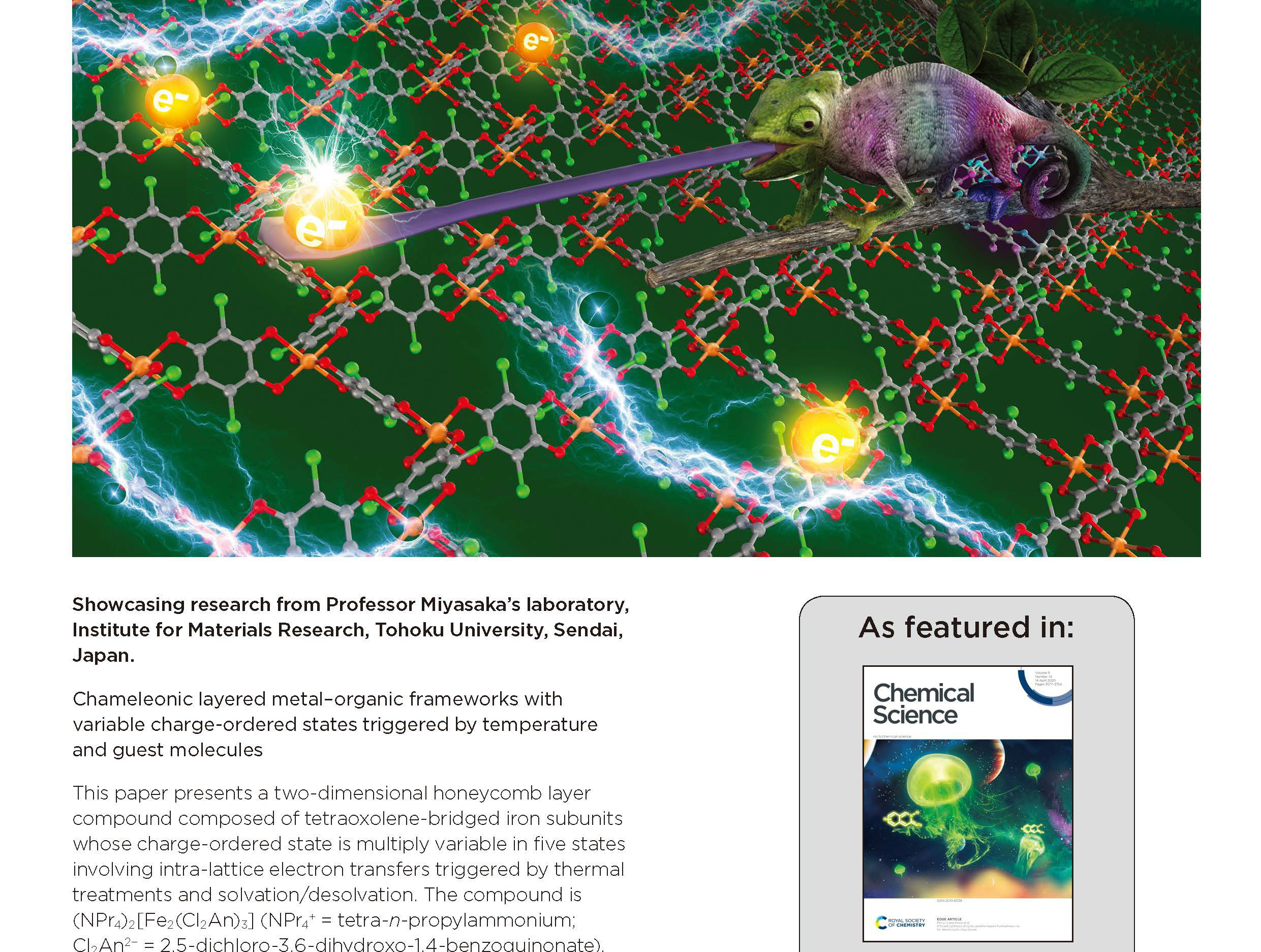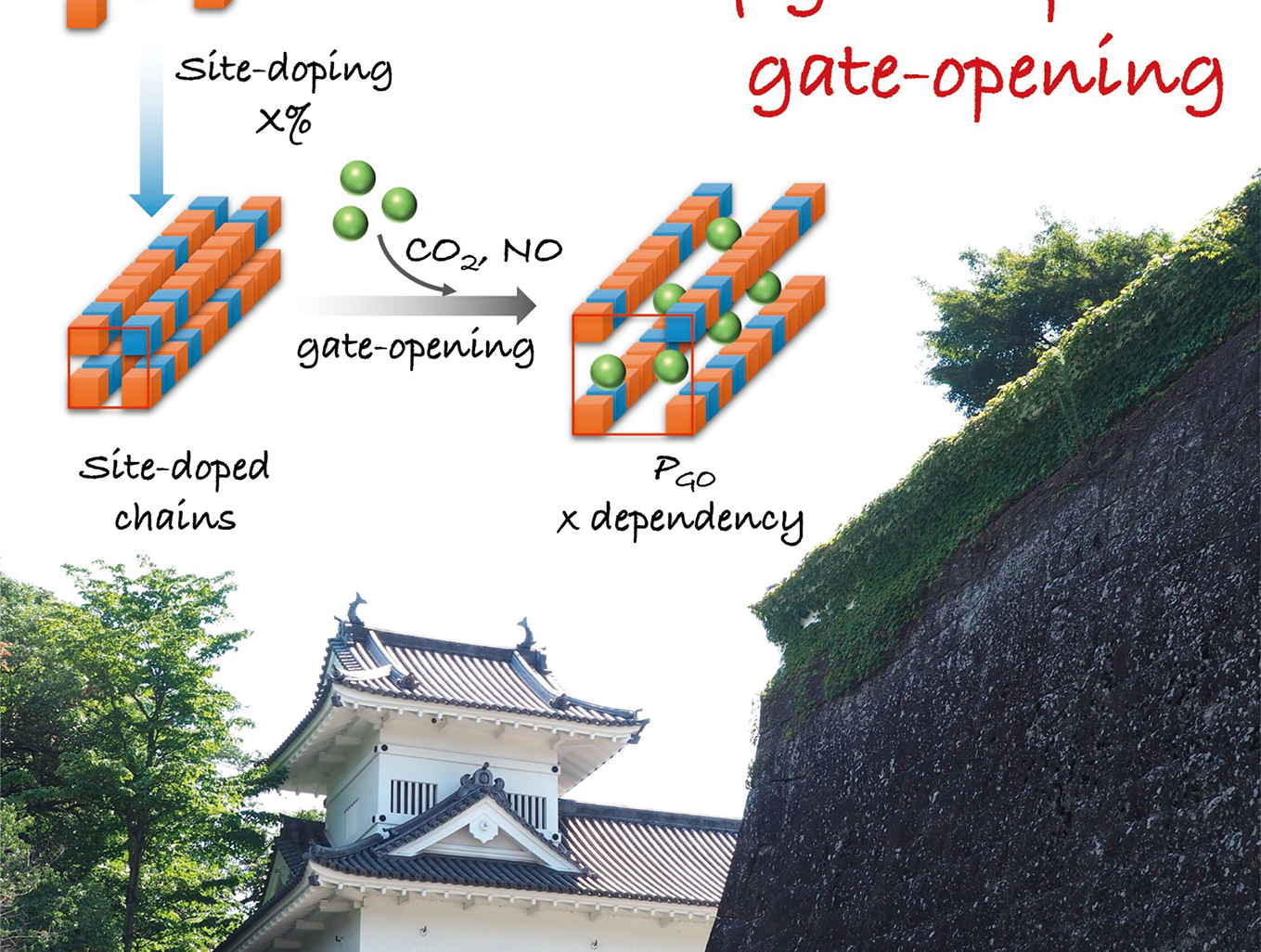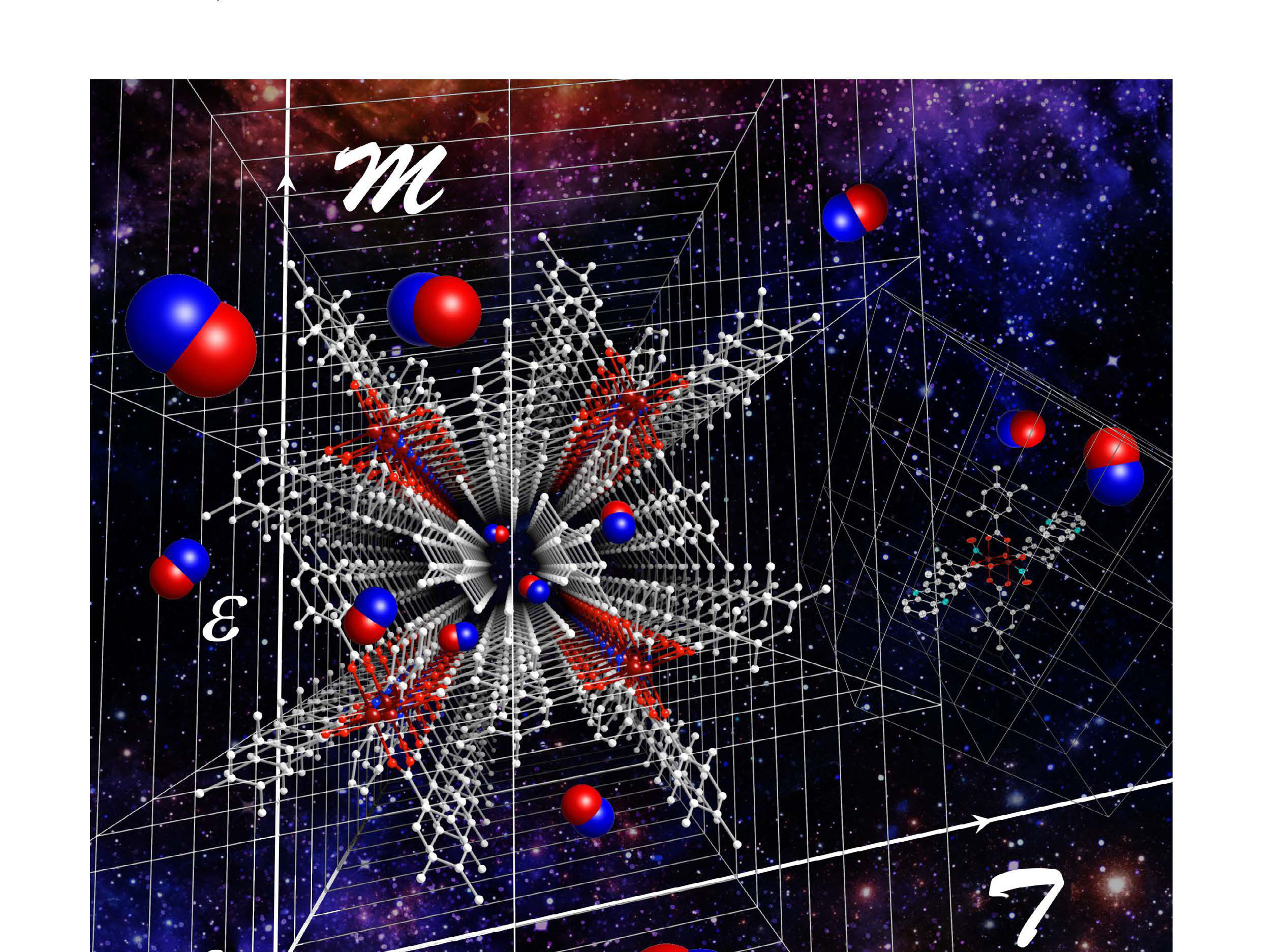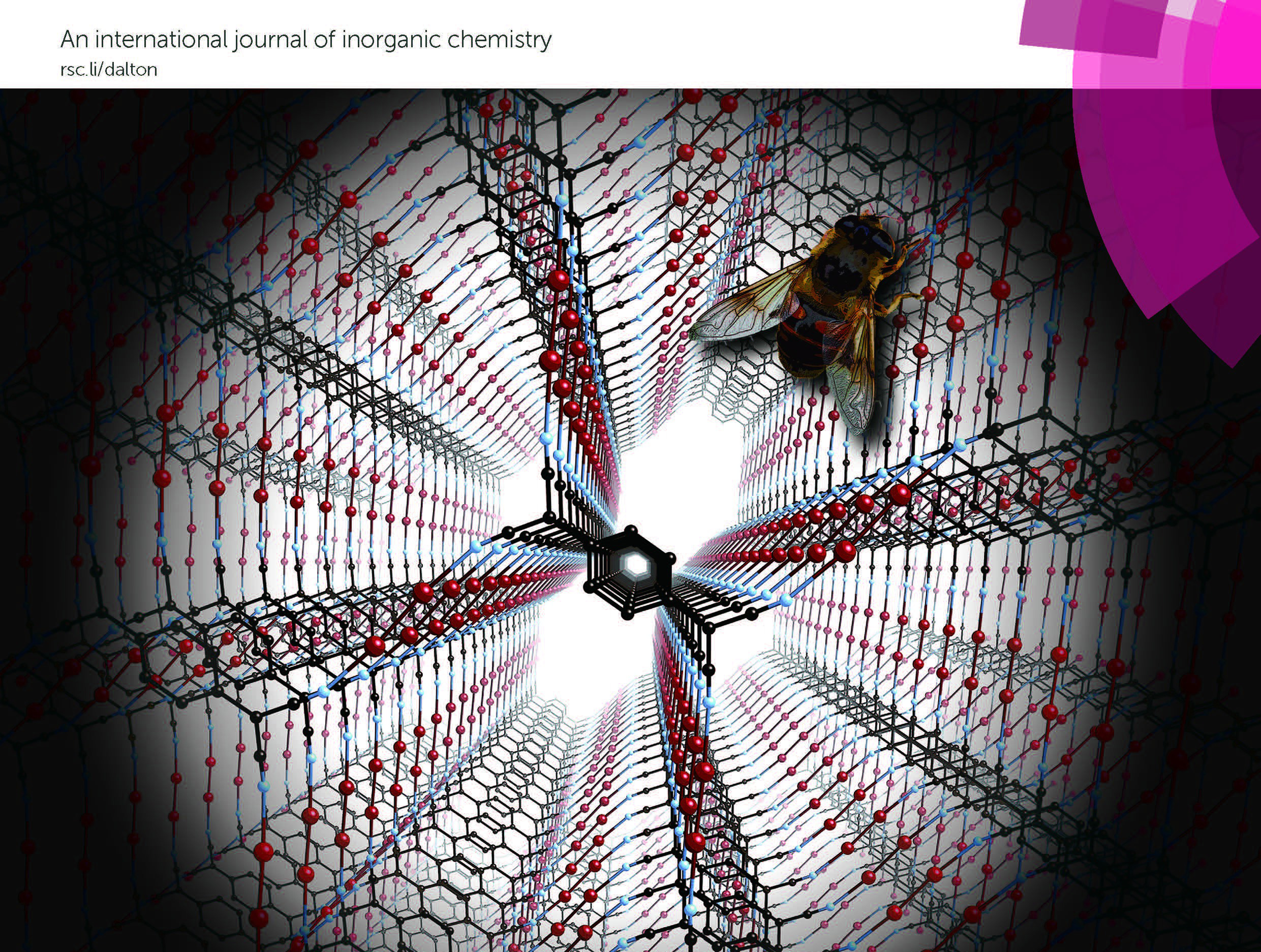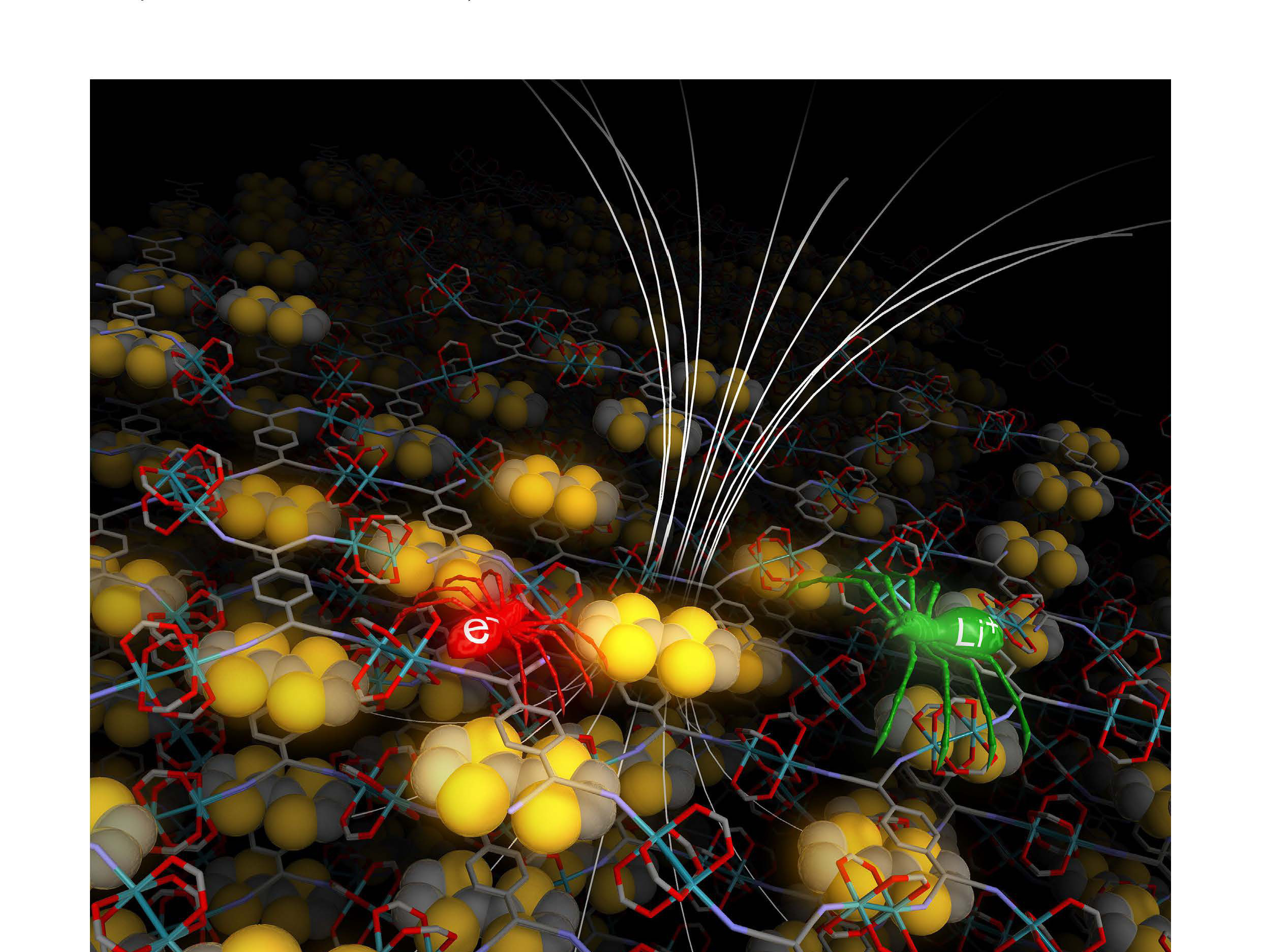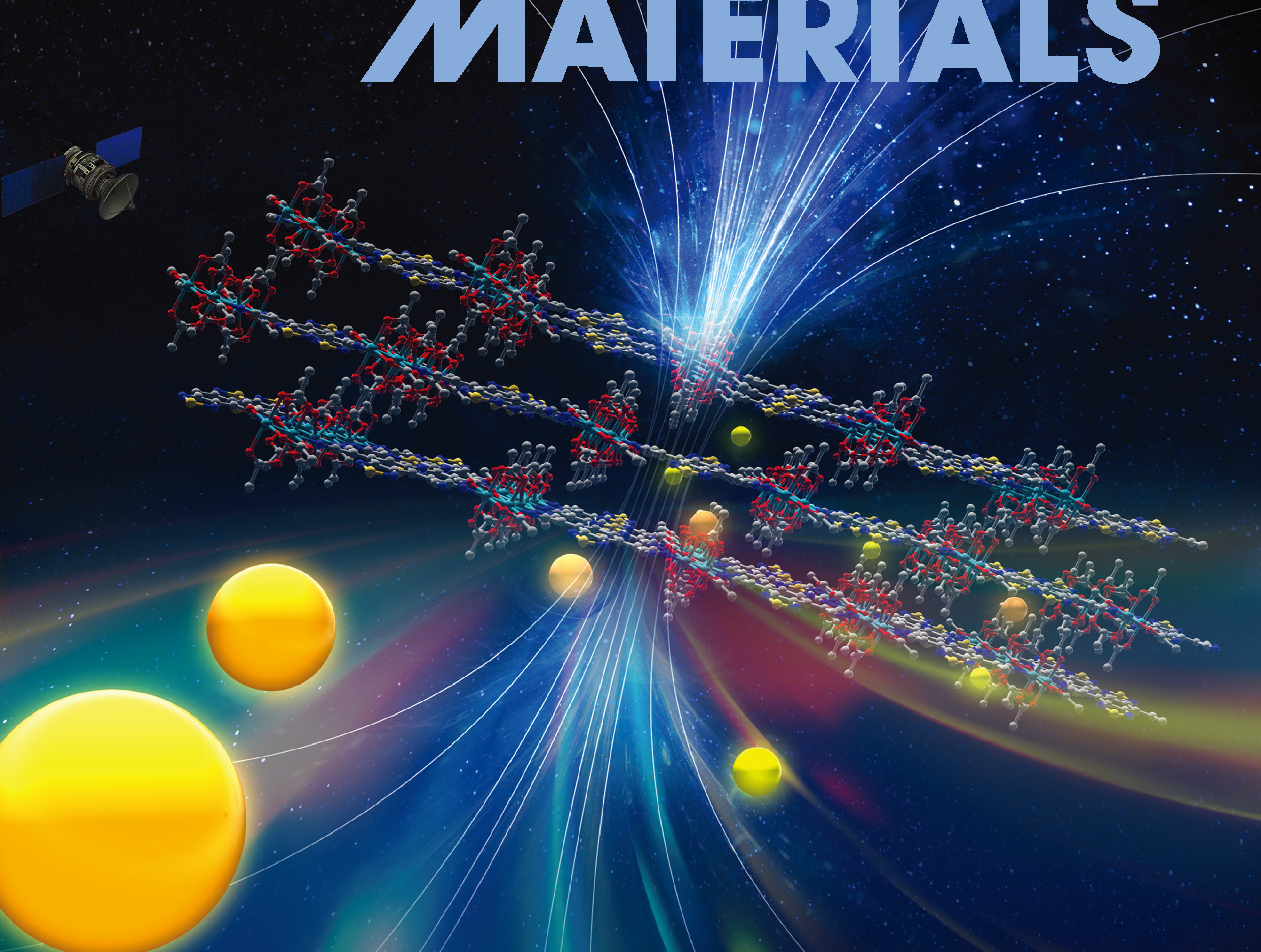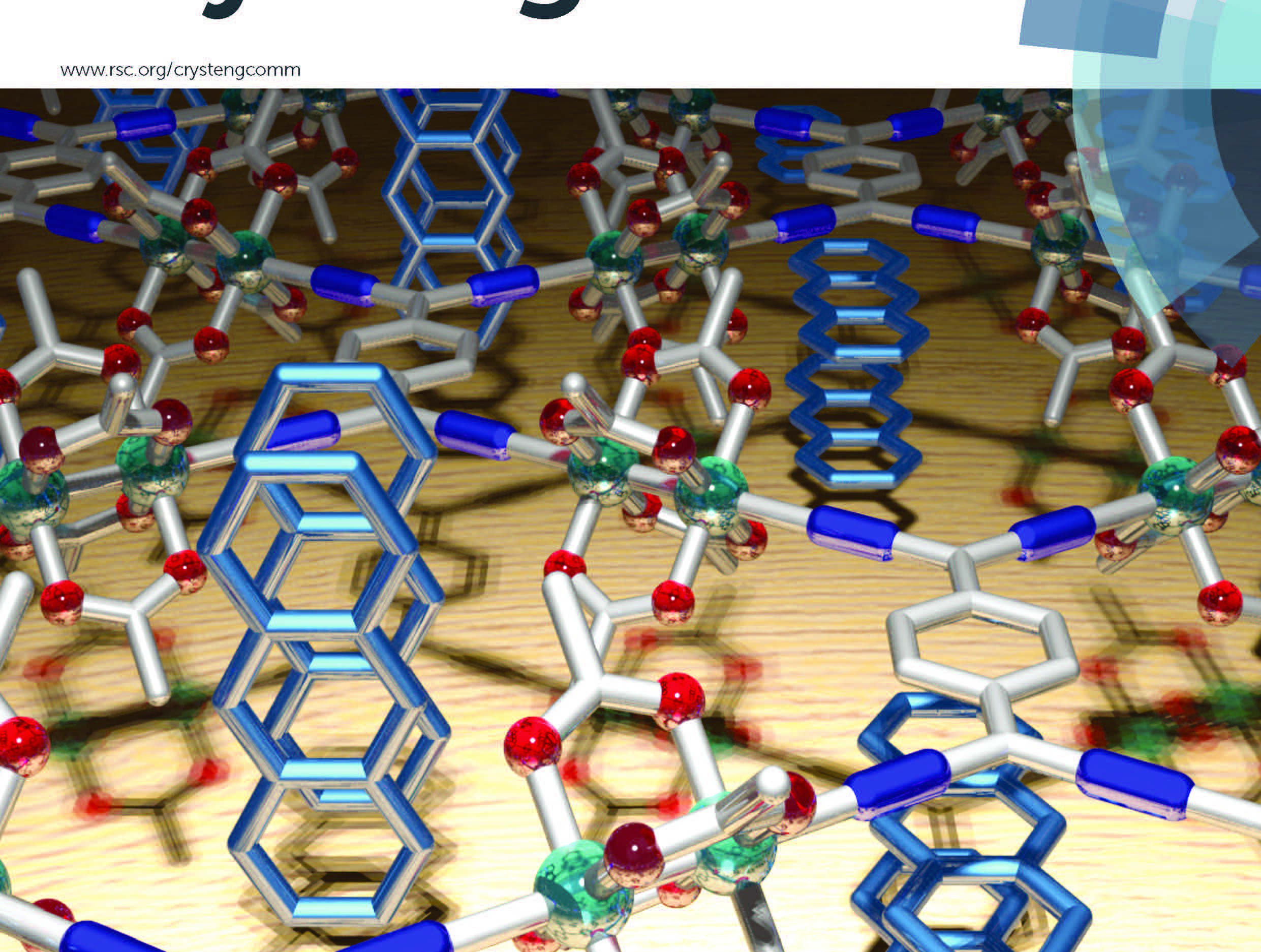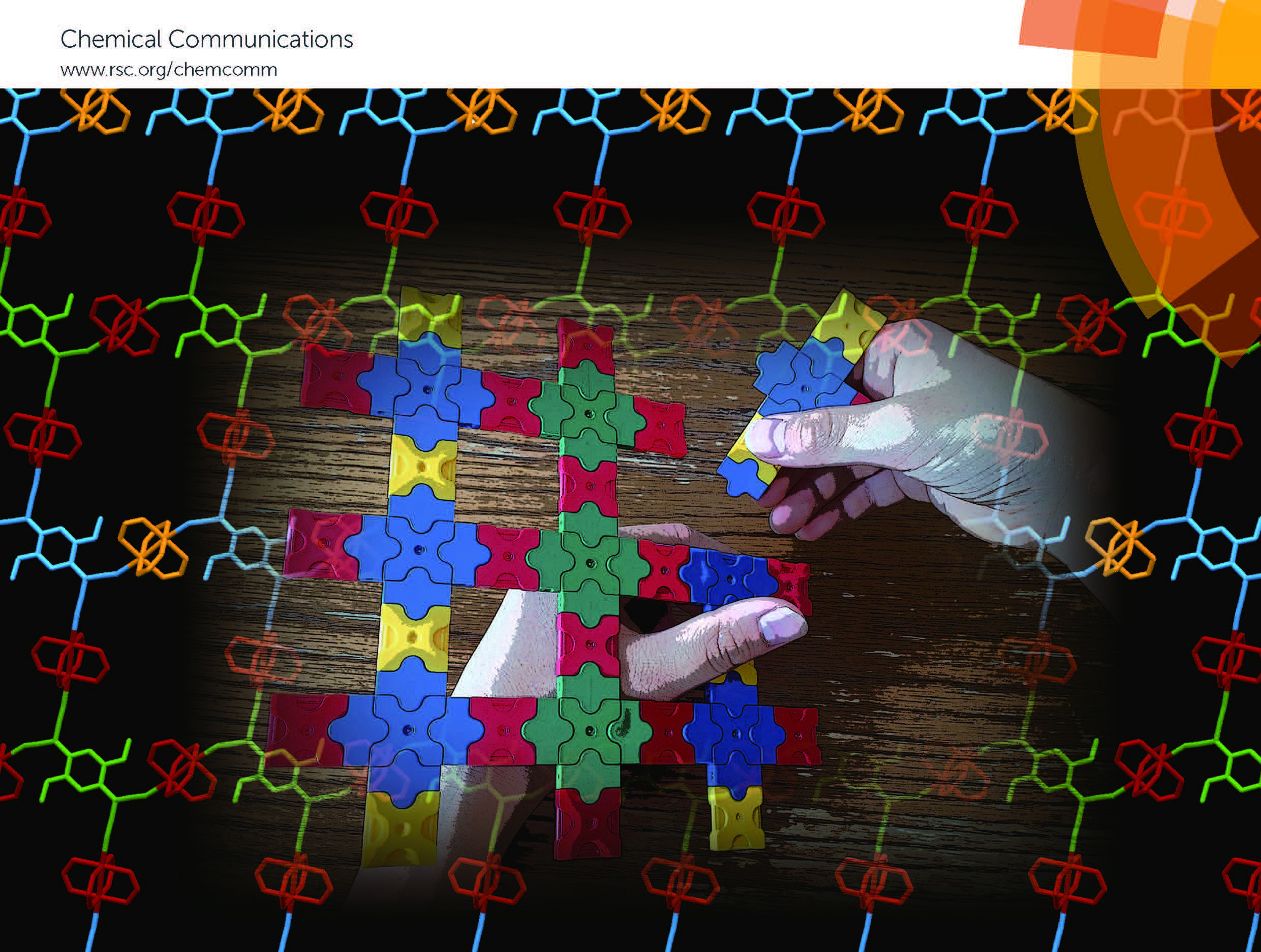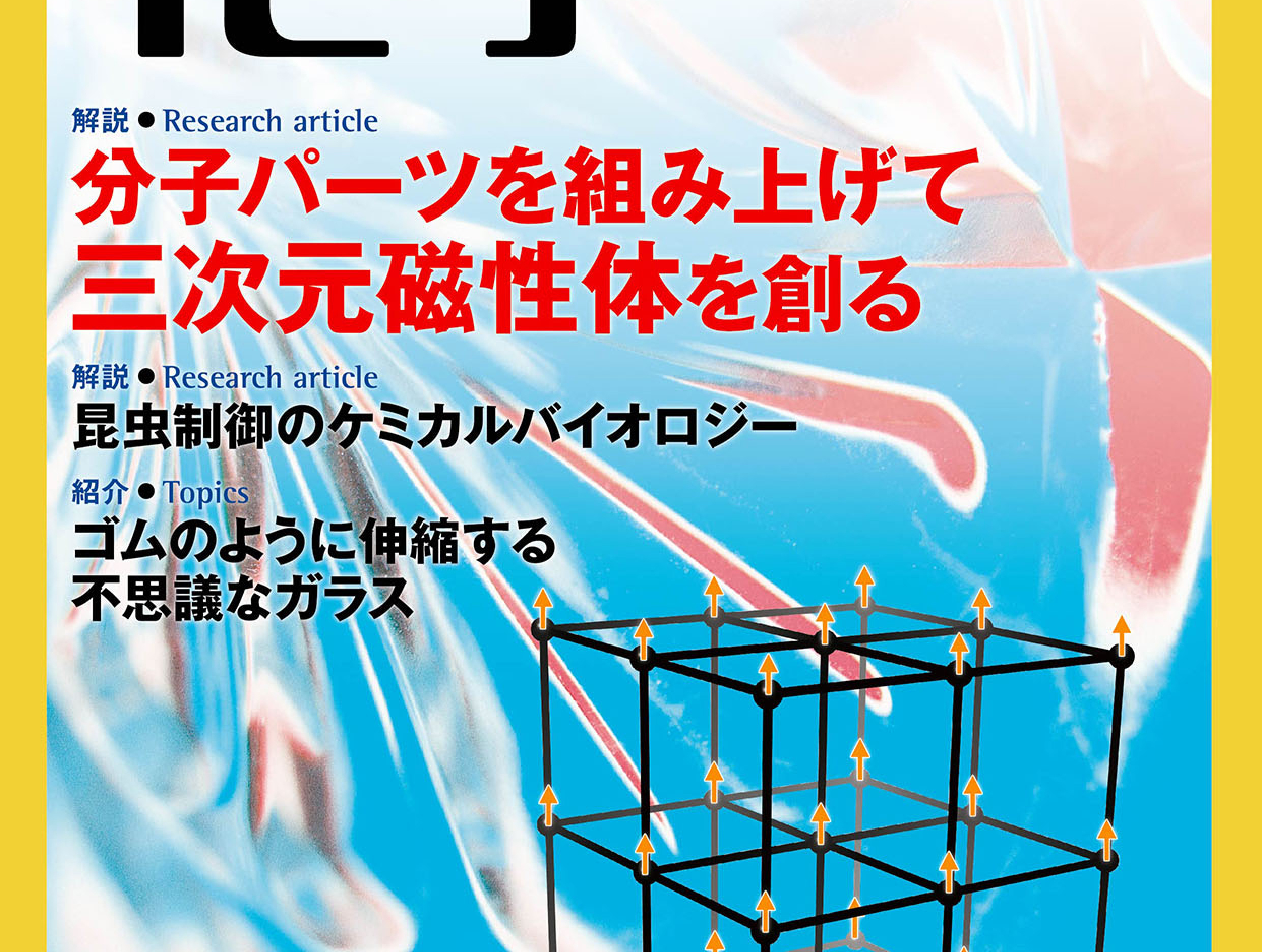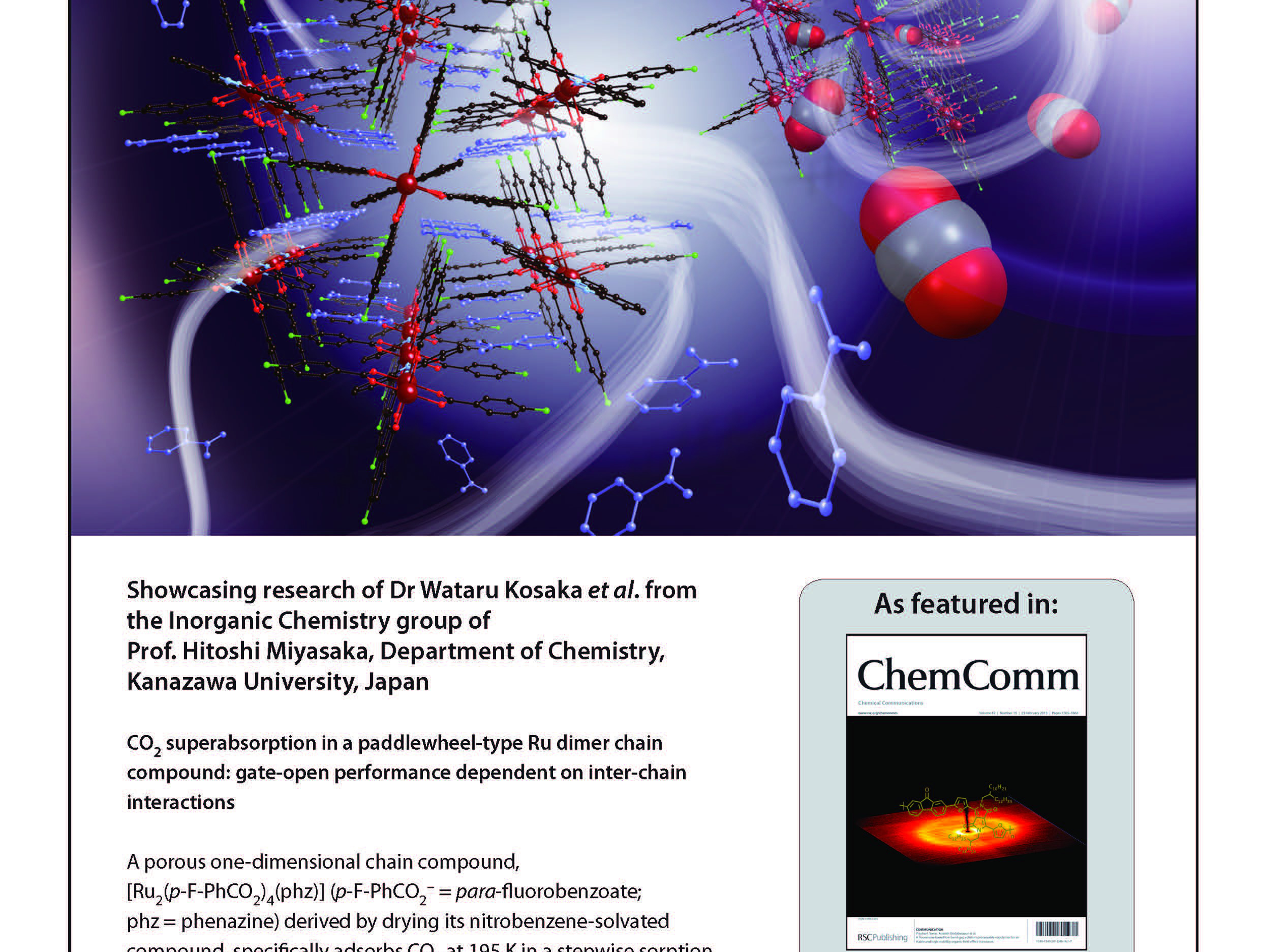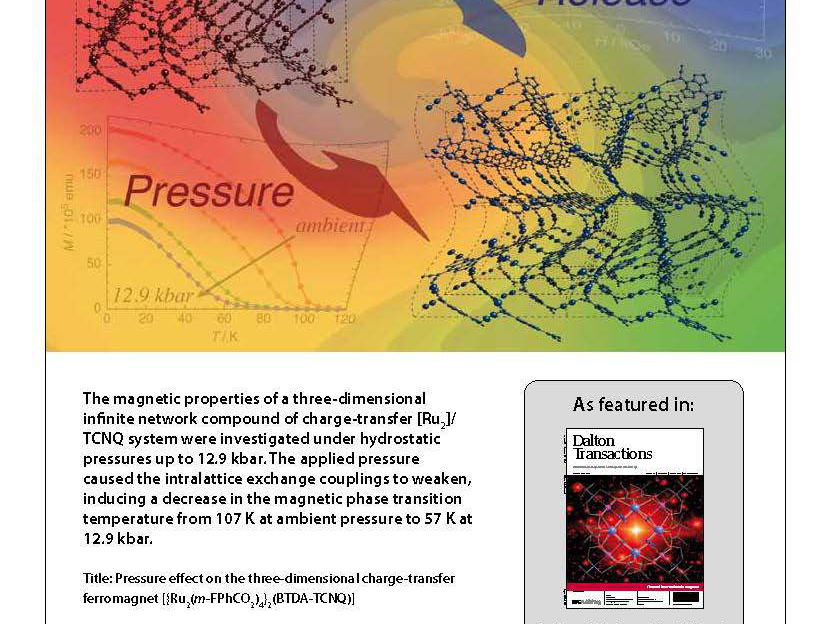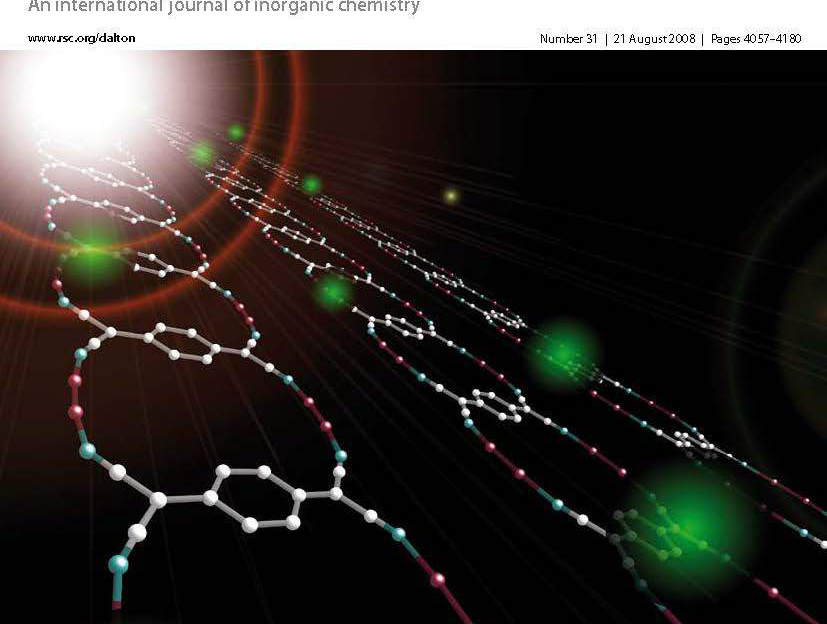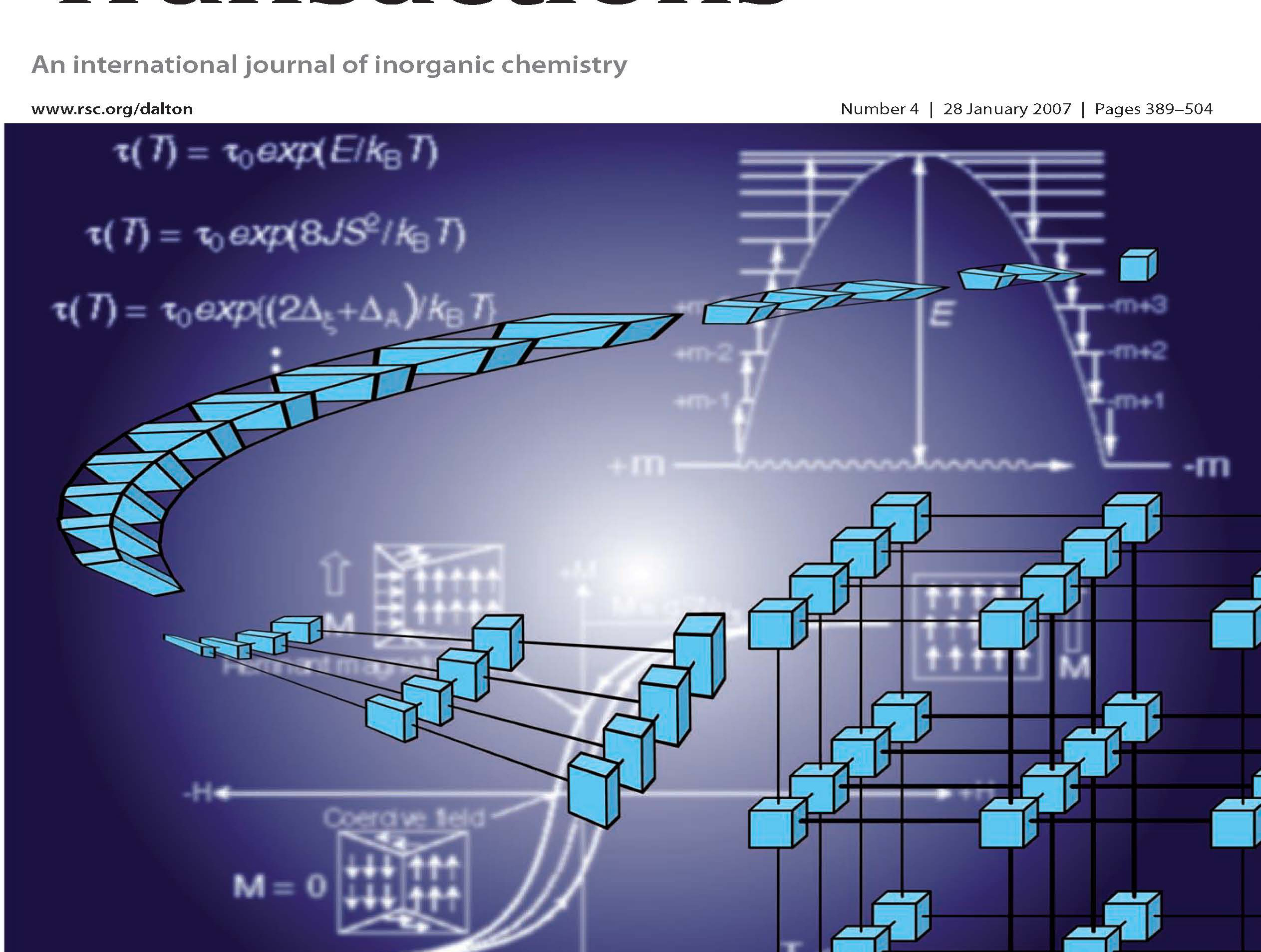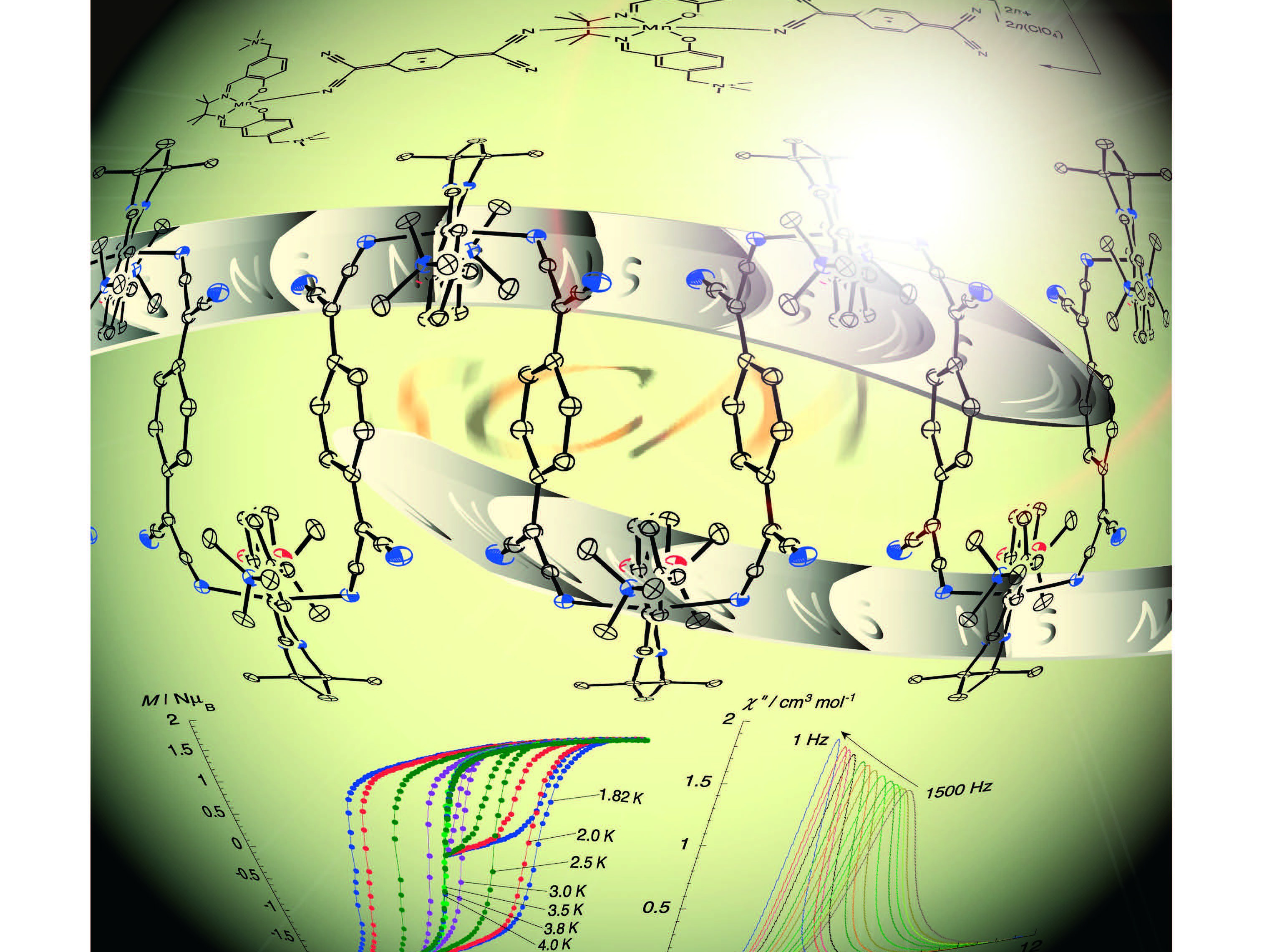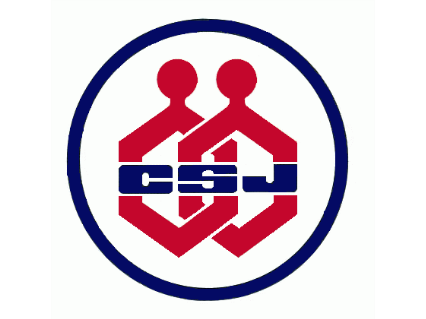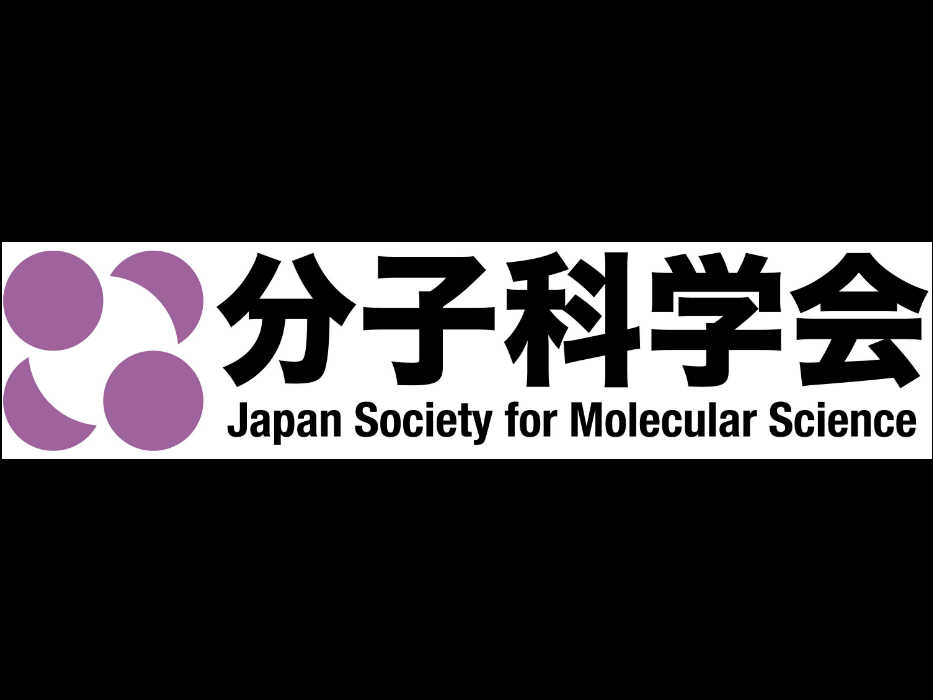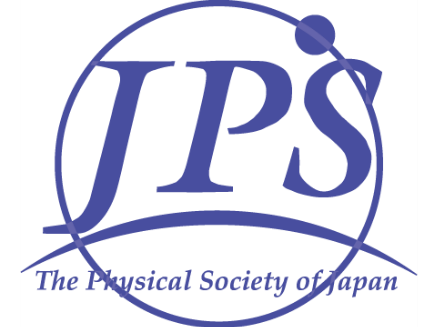Let's Enjoy Science in Miyasaka Group!
Welcome to Miyasaka Group

We are studying subjects in solid-state physical chemistry based on metal complexes or coordination compounds, in which our goal is directed to synergistically control the electronic and magnetic properties and behavior of molecular frameworks, and finally to create new soft molecular materials with unique phenomena. Techniques of crystal engineering or molecular self-assembly with metal complexes enable the creation of diverse molecular frameworks and supramolecular architectures. Many metal complexes have traits such as high redox activity, high charge-transfer activity between metal ions and ligands, and paramagnetism with a large anisotropy controllable by ligand fields around the chosen metal ion. We will be able to tune these characteristics and design “functional” and “dynamical” molecular frameworks as if they were simply constructed using Lego blocks. “Molecules” including metal complexes have the high design performance and flexibility in their type diversity, so it is our new challenge to manipulate on-demand electrons/spins on multi-dimensional frameworks constructed by metal complexes.
Enjoy our research and welcome us to the leading laboratory for solid-state metal-complex chemistry.

About “KINKEN”
What is “KINKEN”? What is IMR? Probably, most of chemists do not know about “KINKEN, IMR.” IMR is one of the leaders in the world in a wide field of research on solid-state materials and their properties, such as metallic materials, oxides, ceramics, semiconductor materials, hydrogen-adsorbing materials, nuclear materials, biomaterials, and unique functional materials for next-generation electronic materials such as spintronic materials, strongly correlated materials, optical device materials, and organic materials. IMR is always transmitting information on unique materials, technologies, and science to the rest of the world based on our knowledge and skills obtained by merging basic and applied sciences, and science and engineering.
See HP for IMR
Are you interested in our work?
If you are interested in our work, let us join. First, please contact us via e-mail.
Post-doctors:
Dependent on the situation. Not available now.
Graduate students (Master’s Program and Doctoral Program) and IGPAS program with a financial support:
NOW WANTED!!
The Graduate School of Science and Faculty of Science at Tohoku University has a program for international graduate students, IGPAS (International Graduate Program for Advanced Science), where candidates choose either Master’s Program (5 years = 2M+3D) or Doctoral Program (3 years). Note that the students have a chance to apply for financial support from the Japanese government (MEXT) scholarship. The application period will be given in November every year; therefore, if you wish to have this program, contact us as soon as possible.
See detail on the web site:
http://www.sci.tohoku.ac.jp/english/igpas/
Of course, we always welcome you as self-supporting international graduate students.
International Research Collaboration with Miyasaka Lab
Financial supports for your collaboration research (supports for your travel and living fees)
IMR, as a world-class Center Of Excellence (COE) for Material Science, has provided open (management/ operation) for researchers in Japan and all around the world. By providing advanced technology research equipment in large and unique facilities to university/research organization researchers, has contributed to promotion of Material Science research and development of research communities in Japan. As a COE in material research, this institute has achieved a social task by widely publishing the results of collaboration research. In recent years, much effort has been put into international collaboration research, due to the globalization of research in this field. To take this collaboration one step further and to strength the international presence as a world-class COE, this institute is launching international collaboration research program.
If you wish to do a collaboration with our group, please contact me (Prof. Miyasaka, E-mail: miyasaka@imr.tohoku.ac.jp)
Please see the guidline. Application-guideline_E_20151112.pdf
See URL to know the details on ICC-IMR program
You can get application forms for projects from URL; Application Form
Please make an application form and send us it. If you have any question, let me know.
Artworks in Chemistry |
Guest- & Photo-Induced Spin State of SCO Framework
|
New charge ordered state in π-PLF
|
CO2 changes magnet: it is simple, due to modification of layer distance
|
Drastic trigger: electron transfer from framework to guest
|
D/A-MOFs of [Ru2] and DCNQI/TCNQ
|
Hydrogen bond magic
|
Creating magnets from a non-magnet
|
Manipulation of charge in frameworks?
|
Change its electronic state like a chameleon
|
Gate-control for gases
|
Let's look at inside of nano-pores, what happen?
|
For Understanding magnetism in layered magnets
|
Breaking the spin singlet in TTF-TCNQ
|
Magnetic Switching in LIB
|
Anthracene locks the lattice
|
A nobel charge-ordered state
|
Cleate new molecular magnets
|
CO2 uptake in [Ru2] chains
|
Change by pressure
|
Donor/acceptor ladder chains
|
From quantum regime to continuous regime
|
SCMs from donor/acceptor building blocks
|
ACADEMIC NEWS
2019

- 2019.05.29 Jian Chen won the IMR Poster Award in 137th KINKEN Conference「Charge Variation in a Tetraoxolene-bridged Fe-based 2-D Honeycomb Layered Chameleonic Material Induced by Temperature and Guest Molecules」
- 2019.05.29 137th KINKEN Conference (Conference room in IMR)
- 2019.04.05 Miyasaka Lab Welcome Party
- 2019.04.01 Start of the 2019 semester in Miyasaka Lab. M1 Nemoto and Watanabe and B4 Eguchi joined our group.
- 2019.03.12 Farewell party for Kishiue and Nagano
- 2019.01.28 Defence for the Master Course thesis in Department of Chemistry, Graduate School of Science, Tohoku University. Kishiue and Nagano passed this examination. Congratulations!
- 2019.01.29 Defence for the PhD thesis in Department of Chemistry, Graduate School of Science, Tohoku University
- 2019.01.28 Workshop on "Solid-State Electrochemistry for Coordination Complexes"(28-29 January, 2019@Nagoya University) Prof. Miyasaka presented.
- 2019.01.16 Press Release (Tohoku University)「酸素分子の電子スピンを見分ける多孔性磁石 酸素ガスの吸脱着による磁石のON-OFF制御に成功」名古屋大学 松田亮太郎教授、京都大学 北川進特別教授らとの共同研究による成果。 東北大学プレスリリース 金研研究成果
- 2019.01.07 2019 Miyasaka group start-up.
2018

- 2018.12.18 Miyasaka group 2018 忘年会
- 2018.10.01 Yang Haoran, who is a researching student, joins Miyasaka group.
- 2018.08.20 Jun Zhang won The Student Lecture Award at 68CJSCC「CO2 Adsorption-Induced Magnetic Phase Switch in a Layered Ferrimagnet Composed of Paddlewheel-Type [Ru2] Units and TCNQ」
- 2018.08.02 Jun Zhang won TheRising Star Award at43rd International Conference on Coordination Chemistry (ICCC2018; S36: Rising Stars in Coordination Chemistry)「Magnetic phase control in a donor/acceptor metal-Organic framework by cooperative CO2 adsorption」
- 2018.08.02 Jian Chen won The Best Poster Award at43rd International Conference on Coordination Chemistry (ICCC2018)「Reversible Electrochemical Control of Magnetic Phase in a Tetraoxolene-Bridged Honeycomb Ferrimagnet through a Lithium-Ion Battery System」
- 2018.04.17 Jun Zhang won the Student Lecture Award at The 98th CSJ Annual Meeting. Her presentation title is "Magnetic Sponge Behavior via Electronic State Modulations in a Redox-Active [Ru2]2TCNQ Coordination Framework."
- 2018.04.14 KINKEN Hanami (Cherry-blossom party)@Mikamine Park, Sendai
- 2018.04.12 Miyasaka Lab Welcome Party
- 2018.04.02 Start of 2018 semester in Miyasaka Lab. M1 Du and Oshiyama joined our group.
- 2018.02.06 Defence for the Master Course thesis in Department of Chemistry, Graduate School of Science, Tohoku University. Huang, Takahashi, Shito, and Shimada, all candidates passed this examination. Congratulations!
- 2018.01.09 2018 Miyasaka group start-up.
2017

- 2017.12.19 Miyasaka group 忘年会
- 2017.11.29 134th IMR Symposium(第134回金研講演会)Fukunaga, Shito, Shimada, and Chen presented at poster session.
- 2017.11.27 4th Japan-Canada Joint Symposium for Coordination Chemistry (27-30 November, 2017@Kyushu University and Miyazaki Phenix Seagaia Resort) Prof. Miyasaka presented.
- 2017.10.23 Miyasaka Lab trip(23-24 October, 2017@Shonai, Yamagata)
- 2017.10.19 π-figuration 4th symposium(19-20 October, 2017@Tokyo Institute of Technology)Prof. Miyasaka presented at poster session.
- 2017.10.08 11th Japan-China Joint Symposium on Metal Cluster Compounds(7-10 October, 2017@Nagoya University)Prof. Miyasaka presented.
- 2017.10.04 "IMONI" party in Miyasaka Lab@Hirose river
- 2017.09.16 11th Annual Meeting of Japan Society for Molecular Science(16-18 September, 2017@Tohoku University)Dr. Kosaka presented and Fukunaga and Shito presented at poster session.
- 2017.09.16 JSCC 67th Annual Meeting(16-18 September, 2017@Hokkaido University)Dr. Sekine, Zhang, Takahashi, and Huang presented.
- 2017.09.15 The 2nd Japan-US Bilateral Meeting on Coordination Chemistry(15-16 September, 2017)Prof. Miyasaka presented.
- 2017.09.07 CSJ 低次元系光機能材料研究会 6th Summer School(7-8 September, 2017@Kesennuma, Oshima)Prof. Miyasaka presented and Shito and Huang presented at poster session.
- 2017.08.21 Tohoku University's Chemistry Summer School 2017(21-22 August, 2017@Pharmaceutical Sciences Lecture Hall)Aliyah presented for her graduation from Tohoku University.
- 2017.07.24 6th Asian Conference on Coordination Chemistry (ACCC6)(24-28 July, 2017@Melbourne, Australia)Prof. Miyasaka and Zhang presented.
- 2017.07.20 IMR Beer Festa
- 2017.06.13 2nd Solid-State Chemistry Forum Symposium(6.13-6.14@IMR)Organized by Miyasaka Lab., and Dr. Taniguchi presented.
- 2017.06.02 34th 無機・分析化学コロキウム(6.02-6.03@Kawatabi Seminor House) Prof. Miyasaka presented.
- 2017.05.26 133th IMR Symposium(第133回金研講演会)
- 2017.04.15 KINKEN-HANAMI @ Mikamine Park
- 2017.04.03 Start of 2017 semester in Miyasaka Lab. M1 Kishiue, Furusawa, and Nagano, they joined our group.
- 2017.01.27 3rd International Symposium on π-System Figuration (1.27-1.28@Nagoya University) Prof. Miyasaka presented.
- 2017.01.26 News release in 日経産業新聞
- 2017.01.13 プレスリリース(東北大学)「通電不要のイオン制御型電磁石の開発に成功–イオンの出入りが磁性状態のON-OFFスイッチに–」東北大学プレスリリース 金研研究成果
- 2017.01.06 2017 Miyasaka group start-up.
2016

- 2016.12.08 2nd E-IMR Workshop(IMR, lecture hole)Prof. Miyasaka presented.
- 2016.11.24 132th IMR Symposium(第132回東北大学金属材料研究所講演会)Kinanti presented (poster).
- 2016.11.05 JSCC Tohoku region Seminar for Young Scientists (IMR, lecture hole) Organized by Miyasaka group with Fukunaga. Tashiro presented
- 2016.10.27 Miyasaka group travel (10.27-10.28@Ohsawa Onsen, Hanamaki, Iwate)
- 2016.10.24 KINKEN-KIST Joint Seminar (10.24-10.25@IMR, lecture hall) Prof. Miyasaka presented.
- 2016.10.20 3rd Meeting of π-System Figration Group in Grant-in-Aid for Scientific Research on Innovation Areas (2014-2018) (10.20-10.21@Sakura-hall in Tohoku University) Prof. Miyasaka presented.
- 2016.10.17 Miyasaka group 'IMONI' (outdoor cooking)
- 2016.10.01 Chen Jian joined Miyasaka group (PhD course).
- 2016.09.13 The 10th Annual Meeting of Japan Society for Molecular Science (9.13-9.15@Kobe Island Center) Dr. Taniguchi presented.
- 2016.09.10 The 66th Conference of Japan Society of Coordination Chemistry (9.10-9.12@Fukuoka University) Dr. Sekine, Fukunaga (oral), Shito, Shimada, and Takahashi (poster) presented.
- 2016.09.09 Japan-Australia bilateral Symposium (9.9-9.10@Fukuoka University) Dr. Kosaka presented.
- 2016.09.04 The 15th International Conference on Molecule-based Magnets (ICMM 2016) (9.4-9.8@Sendai International Center) Dr. Taniguchi, Dr. Kosaka, Dr. Sekine, Fukunaga, Zhang poster presentation.
- 2016.09.03 Pre-ICMM@IMR (KINKEN-WAKATE 2016) (9.3-9.4@IMR, lecture hall) Miyasaka group organized.
- 2016.08.24 2016 Admission exam for Master course in Department of Chemistry, Graduate School of Science, Tohoku University (8.24-8.25)
- 2016.08.22 2016 Admission Exam for PhD course in Department of Chemistry, Graduate School of Science, Tohoku University
- 2016.08.22 Julien visited our lab.
- 2016.08.02 Defence for Master degree (complete in September) Jun Zhang and Changchao Dou had this defence.
- 2016.07.10 2nd General Meeting forπ-System Figuration(7.10-7.12@Jyo-zan-kei Hokkaido)Prof. Miyasaka presented.
- 2016.07.03 42nd International Conference on Coordination Chemistry (ICCC2016)(7.3-7.8@Brest, France)Prof. Miyasaka presented.
- 2016.06.15 PHyM Symposium 2016(@SAKURA Hole Tohoku University)Prof. Miyasaka presented.
- 2016.06.14 第1回固体化学フォーラム研究会:固体物質・材料研究の現状と未来(6.14-6.15@ISSP The University of Tokyo, Kashiwa Campus)Prof. Miyasaka presented.
- 2016.06.03 33th 無機分析コロキウム(6.03-6.04@Kawatabi Seminor House)Dr. Sekine presented.
- 2016.05.26 2nd Bordeaux Olivier Kahn Discussion (2nd BOOK-D) (5.26-5.28@CRPP Bordeaux) Prof. Miyasaka presented.
- 2016.05.21 100th Anniversary for IMR Anniversary event at Westin Hotel
- 2016.05.19 100th Anniversary for IMR IMR Conference (5.19-5.20@KINKEN)
- 2016.05.18 100th Anniversary for IMR Summit of Materials Science 2016 (SMS2016) (@KINKEN)
- 2016.04.16 KINKEN HANAMI @ Mikamine park
- 2016.04.14 2nd International Symposium on π-System Figuration(4.14-4.15@Community Center Urawa, Saitama, Japan)
- 2016.04.04 Start of 2016 semester in Miyasaka Lab. M1 Shito, Shimada, Takahashi, and Po-Jung, and B3 Kinanti, they joined our group.
- 2016.03.24 96th CSJ Annual Meeting (3.24-3.27@Doshisha University)
- 2016.03.01 Press release from Tohoku University「リチウムイオン電池からイオン制御可能な磁石の創出に成功ー電気的にスイッチング可能な磁気デバイスの創出に貢献ー」東北大学プレスリリース 金研研究成果
- 2016.02.19 8th Yamashita Symposium (2.19-2.21@Department of Chemistry, Tohoku University)
- 2016.02.16 Ski tour in Miyasaka group @ Yamagata Zao
- 2016.02.08 Defence for Master degree in Department of Chemistry, Graduate School of Science, Tohoku University (2.8-2.10, 2.12) Keisuke Narushima and Taiga Yokoyama had this defence.
- 2016.02.04 2016 Kumamoto Symposium on Two-Dimensional Nanomaterials (2.4-2.6@100th Annyversary Hall, Kumamoto University) Prof. Miyasaka presented.
- 2016.02.01 Defence for PhD degree in Kanazawa University (Kanazawa) Masaki Nishio had this defence.
- 2016.01.27 Defence for PhD degree in Department of Chemistry, Graduate School of Science, Tohoku University (1.27-1.29)
- 2016.01.22 1st Symposium in E-IMR (IMR) Prof. Miyasaka presented.
- 2016.01.22 6th Symposium in LC-IMR (IMR) Prof. Miyasaka presented.
- 2016.01.18 Pre-defence for Master degree in Inorganic Chemistry Devision, Department of Chemistry, Tohoku University(1.18-1.19)Narushima and Yokoyama had the defence review.
- 2016.01.05 2016 Miyasaka group start-up.
2015

- 2015.12.25 Pre-defence for Doctor degree in Inorganic Chemistry Devision, Department of Chemistry, Tohoku University
- 2015.12.15 International Chemical Congress of PACIFIC BASIN SOCIETIES 2015 (Pacifichem 2015)(12.15-12.20@Honolulu, Hawaii USA)Zhang, Fukunaga, and Dr. Kosaka presented at poster setions, and Prof. Miyasaka presented at a symposium.
- 2015.11.30 8th French Research Organizations-Tohoku University Joint Workshop on Frontier Materials (FRONTIER 2015)(11.30-12.3@Tohoku University)Prof. Miyasaka presented.
- 2015.11.25 130th KINKEN Conference (11.25-11.26)Dr. Tniguchi presented, and Yokoyama presented at poster presentations.
- 2015.10.23 10th China-Japan Joint Symposium on Metal Cluster Compounds(10.23-10.26@Fuzhou, China)Prof. Miyasaka presented.
- 2015.10.10 Katahira Campus Festival & Kinken Open House(10.10-10.11)
- 2015.10.04 2nd Meeting of π-System Figuration Group inGrant-in-Aid for Scientific Research on Innovative Areas (2014-2018), MEXT, Japan(10.4-10.6@Yamagata Zao)Prof. Miyasaka presented.
- 2015.09.20 Mr. Taiga Yokoyama, who is a MS student in Miyasaka group, wins a Poster Award in The 65th Conference of Japan Society of Coordination Chemistry.
- 2015.09.20 The 65th Conference of Japan Society of Coordination Chemistry(9.20-9.23@Nara Woman's University)Dr. Kosaka, Dr. Sekine, Zhang presented, and Fukunaga and Yokoyama had poster presentations.
- 2015.09.19 2nd Japan-Germany bilateral symposium(9.19-9.20@Nara Woman's University)Prof. Miyasaka presented.
- 2015.09.16 9th Annual Meeting of Japan Society for Molecular Science(9.16-9.19@Ookayama campus of Tokyo Institute of Technology)Fukunaga presented.
- 2015.08.27 Campus Asia Summer School in Tohoku University 2015
- 2015.08.25 Visiting of Prof. Eugenio Coronado
- 2015.08.19 Administration examination for Graduate school of Department of Chemistry, Faculty of Science, Tohoku University(8.19-8.20)
- 2015.07.25 248th Kyushu Saku-Kon (a meeting on coordination Chemistry at Kyushu region)(Hakozaki campus of Kyushu University)Prof. Miyasaka presented.
- 2015.07.16 KINKEN Beer Party 2015
- 2015.07.12 5th Asian Conference on Coordination Chemistry (ACCC5)(7.12-7.16@The University of Hong Kong, Hong Kong) Prof. Miyasaka presented.
- 2015.06.23 2015 International Conference on Nanospace Materials (ICNM 2015)(6.23-6.25@National Taiwan University)Prof. Miyasaka presented.
- 2015.06.08 2nd Symposium on π-system figuration(6.8-6.9@Osaka)Prof. Miyasaka presented.
- 2015.05.29 Mr. Yuta Tashiro, who is a PhD student in Miyasaka group, wins a Student Poster Award in 129th KINKEN Cobference.
- 2015.05.29 129th KINKEN Conference (@KINKEN lecture hole at 2nd building) Dr. Kosaka, Tashiro, Fukunaga, and Zhang presented.
- 2015.04.01 Miyasaka Lab. 2015 was started. Ms. Nakamura and Mr. Yudhistira joined from this semester.
- 2015.03.26 95th Annual Meeting of The Chemistry Society of Japan(3.26-3.29@Nihon University)Fukunaga and Zhang presented.
- 2015.03.23 249th ACS National Meeting Session: ACS Award for Distinguished Service in the Advancement of Inorganic Chemistry: Symposium in Honor of Kim R. Dunbar(3.23-3.25@Denver, Colorado USA)Prof. Miyasaka presented.
- 2015.03.17 Initiative Seminar for Molecular Technology -Molecular Technology and Spins-(3.17-3.18@Osaka University)Prof. Miyasaka presented.
- 2015.03.04 Visiting Prof. Hui-Lien Tsai Lab. at National Cheng Kung University in Tainan, Taiwan(3.4-3.6)Prof. Miyasaka presented.
- 2015.02.20 2nd Meeting@Tohoku University (金属錯体の固体物性最前線ー金属錯体と固体物性物理と生物物性の連携新領域を目指してー)(2.20-2.22@Tohoku University, Dept. of Chemistry)Prof. Miyasaka presented.
- 2015.02.10 Defense of Master degree for Hiroki Fukunaga, who is a 2nd Master corse student in Miyasaka group .
2014

- 2014.12.22 The work reported in Angew. Chem. was introduced in a news paper (Nikkei Sangyo Shinbun).
- 2014.12.17 The work reported in Angew. Chem. was introduced in Science Portal for JST.Science Portal
- 2014.12.12 Press-release: ”分子で磁石を創る”新たな設計法を開発本学プレスリリース
- 2014.12.10 Our work published recently inAngew. Chem. Int. Ed.was introduced at Wiley website.Wiley-JAPAN サイエンスカフェ ChemistryView
- 2014.11.27 128th KINKEN Conference (@ KINKEN) Nishio, Fukunaga, Narushima, and Zhang presented.
- 2014.11.19 The 55th Battery Symposium in Japan(11.19-11.21@Kyoto International Conference Center)Dr. Taniguchi presented.
- 2014.10.17 Mr. Hiroki Fukunaga, who is a MS student in Miyasaka group, wins a Student Oral Presentation Award in The 64th Conference of Japan Society of Coordination Chemistry.JSCC URL
- 2014.09.28 4th International Conference on Metal-Organic Frameworks & Open Framework Compounds (MOF2014)(9.28-10.1@Kobe)Dr. Kosaka presented.
- 2014.09.27 Pre-MOF2014(@ Senri Life Science Center, Osaka)
- 2014.09.21 8th Annual Meeting of Japan Society for Molecular Science 2014(9.21-9.24@Hiroshima University)Nishio presented.
- 2014.09.18 64th Annual Conference on Coordination Chemistry(9.18-9.20@Chuo University)Dr. Kosaka, Fukunaga, Narushima, and Zhnag presented.
- 2014.09.17 2nd Japan-UK Joint Symposium on Coordination Chemistry (9.17-9.19@Chuo University) Prof. Miyasaka presented.
- 2014.09.01 Press-release: 多孔性金属錯体におけるガス吸着挙動の電気的検出に成功本学プレスリリース 金研成果
- 2014.08.19 2015 Admission examination for Department of Chemistry, Graduate School of Science, Tohoku University(8.19-8.20)
- 2014.08.01 Summer School 2014 for Young Coordination Chemistry’s Association JAPAN(8.1-8.3@ Sun-shine SHIRAKO, Chiba JAPAN) Dr. Sekine, Nishio, Fukunaga, Yokoyama, Narushima joined and Prof. Miyasaka presented.
- 2014.07.21 41st International Conference on Coordination Chemistry (ICCC-41, 7.21-7.25@Singapore) Prof. Miyasaka presented.
- 2014.06.05 The 14th International Conference on Molecule-Based Magnets (ICMM-2014, 6.5-6.10@Saint-Petersburg, Russia) Prof. Miyasaka presented.
- 2014.06.20 An orientation meeting for Katahira laboratories (@ WPI building 2F meeting room)
- 2014.06.01 3rd Canada-Japan Bilateral Symposium and 97th Canadian Chemistry Conference and Exhibition (6.1-6.6@Whistler, Vancouver, Canada) Prof. Miyasaka presented.
- 2014.05.30 31th Colloquium on Inorganic and Analytical Chemistry (BUN-COLLO) (@ Kawatabi Seminar Center) Dr. Kosaka presented.
- 2014.05.28 127th KINKEN Conference (@ KINKEN) Fukunaga presented.
- 2014.05.26 5th Workshop on Current Trends in Molecular and Nanoscale Magnetism (CTMNM2014, 5.26-5.29@Cyprus) Prof. Miyasaka presented.
- 2014.04.01 Miyasaka Lab. 2014 was started. Dr. Koji Taniguchi as an associate professor and Dr. Yoshihiro Sekine as an assistant professor joined our group. The name of the division was changed to “Solid-State Metal-Complex Chemistry”.
- 2014.03.27 The 94th Annual Meeting of Chemical Society of Japan (3.27-3.30@Nagoya Univ.) Fukunaga and Dr. Kosaka presented.
- 2014.02.12 Thesis defense for the Master course by Tonouchi, Yamagishi, and Nakabayashi @ Kanazawa University
- 2014.01.20 International Symposium on Coordination Programming 2014 (ISCP2014)(1.20-1.22@University of Tokyo)Prof. Miyasaka presented.
2013

- 2013.12.09 Mr. Masanori Tonouchi, who is a MS student in Miyasaka group, wins a Student Oral Presentation Award in The 63th Conference of Japan Society of Coordination Chemistry.JSCC URL
- 2013.11.27 The 126th IMR workshop (11.27-11.28 @IMR lecture hall) Prof. Miyasaka presented, and Dr. Kosaka and Mr. Fukunaga presented at the poster session.
- 2013.11.22 IMR Training Workshop for The Technical Centers (@IMR lecture hall) Prof. Miyasaka presented.
- 2013.11.13 A visit by Dr. Rodolphe Clérac, Prof. Corine Mathoniere (11.13-11.17, 11.20-11.21)
- 2013.11.04 ACCC4-2013 (11.04-11.07@Jeju, Korea) Prof. Miyasaka presented.
- 2013.11.02 Ms. Kayo Yamagishi, who is a MS student in Miyasaka group, wins a Poster Award in The 63th Conference of Japan Society of Coordination Chemistry.JSCC URL
- 2013.11.02 The 63th Conference of Japan Society of Coordination Chemistry (11.02-11.04@University of the Ryukyus) Tonouchi, Yamagishi, and Fukunaga presented.
- 2013.10.31 The 2nd Japan-Canada Bilateral Meeting (10.31-11.01@Okinawa) Prof. Miyasaka presented.
- 2013.10.12 KINKEN Open House (10.12-10.13)
- 2013.10.10 Mr. Masaki Nishio, who is a PhD student (D3) in Miyasaka group, wins a Poster Award in International Symposium for the 70th Anniversary of the Tohoku Branch of the Chemical Society of Japan.日本化学会東北支部URL
- 2013.09.28 International Symposium for the 70th Anniversary of the Tohoku Branch of the Chemical Society of Japan(9.28-9.30 @Tohoku University Kawauchi-Campus〕, at which Tonouchi, Yamagishi, Nakabayashi, and Nishio had poster presentations.
- 2013.09.24 The 7th Annual Meeting of Japan Society for Molecular Science (9.24-9.27 @Kyoto), at which Nakabayshi had an oral presentation.
- 2013.08.01 Dr. Wataru Kosaka joined our group as an Assistant Professor.
- 2013.04.01 Miyasaka Lab. was just started up at IMR, Tohoku University.
ANNOUNCEMENT
2018 Conference & Symposium
2018.7.28-7.30: 68th Annual Meeting for Japan Society of Coordination Chemistry@Sendai
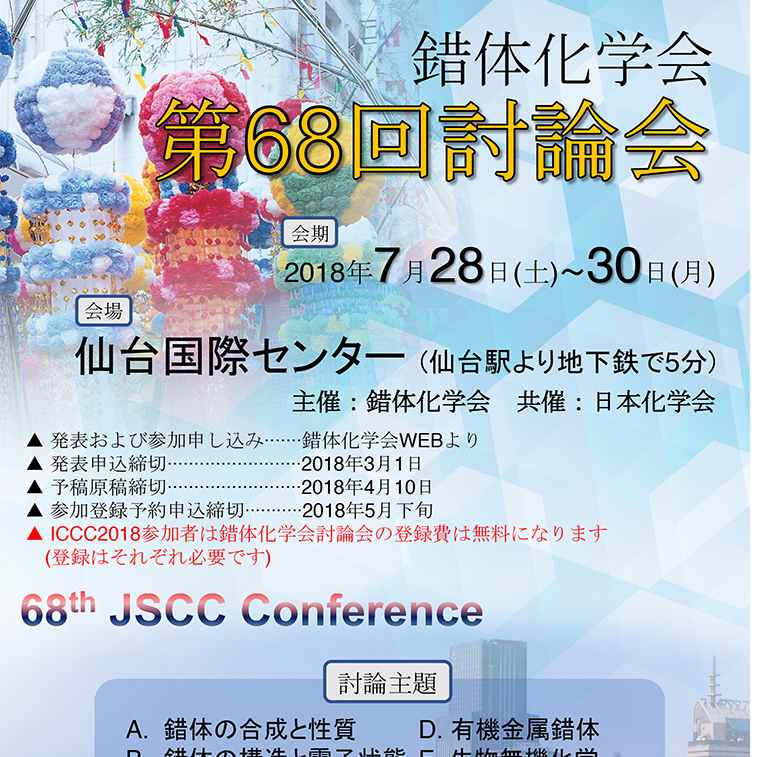
68th Annual Meeting for JSCC will be held at Sendai International Center in the term of June 28-30, 2018 followed by ICCC2018 (July 30-August 4) at the same place. See URL:cjscc68-hp
2018.7.30-8.4: 43rd International Conference on Coordination Chemistry (ICCC2018) in Sendai, Japan
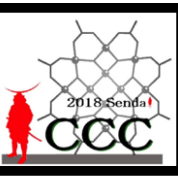
43rd ICCC will be held at Sendai International Center in the term of June 30-August 4, 2018, after the national conference of JSCC (June 28-30, 2018). See URL:ICCC2018-hp
2017 Conference & Symposium
2017.6.13-14: 2nd Workshop of Solid State Chemistry Forum @ IMR

The titled workshop will be held at IMR, Tohoku University in 13th-14th June, 2017 (almost presented in Japanese). We are planning to have a poster session on the evening of 13th June, so please submit your abstract by 13th May, 2017 to: ssc-forum2@imr.tohoku.ac.jp. See URL:
http://www-lab.imr.tohoku.ac.jp/~ssc-forum2/
2016 Conference & Symposium
2016.5.18-21: 2016 The 100th anniversary of Institute for Materials Research, Tohoku University

IMR will celebrate its 100th anniversary in 2016.See the detail.
2016.6.14-15: 東京大学物性研究所短期研究会
第1回固体化学フォーラム研究会:固体物質・材料研究の現在と未来
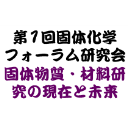
The titled workshop will be held at Kashiwa campus of University of Tokyo in 14th and 15th June, 2016.
See the detail.
2016.9.3-4: "Workshop for Young Investigators on Functional Molecular Materials and Molecular Related Magnetism"
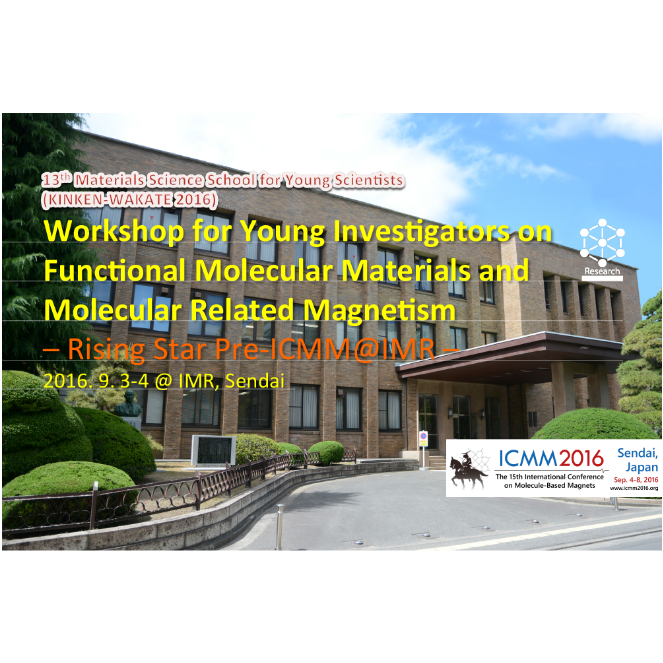 The titled international workshop will be held in September 3-4, 2016 at IMR. The registration fee is free of charge. Please join us and have active discussion.See the detail.
The titled international workshop will be held in September 3-4, 2016 at IMR. The registration fee is free of charge. Please join us and have active discussion.See the detail.
2016.9.4-8: 15th International Conference on Molecule-based Magnets (ICMM2016)
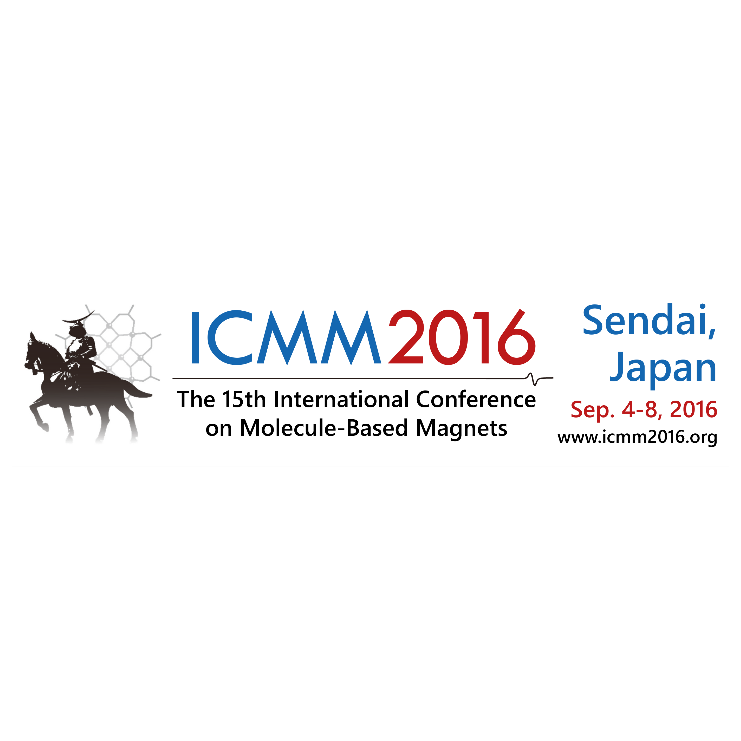 ICMM2016 will be held at International Conference Center in Sendai in September 4-8, 2016.
ICMM2016 will be held at International Conference Center in Sendai in September 4-8, 2016.
See the detail.
